

| Region rejsu : Morze Śródziemne |
| Firma : Azamara Cruises |
| Statek : Azamara Journey |
| Data rozpoczęcia : sob. 15 maj 2027 |
| Data zakończenia : sob. 19 cze 2027 |
| Liczba nocy : 35 nocy |
| Dzień | Data | Port | Wypłynięcie | Odpłynięcie |
|---|---|---|---|---|
| 1 | 15.05 sob. | Rzym (Civitavecchia) / Włochy | 18:00 | |
| 2 | 16.05 niedz. | FLORENCJA PISA | 08:00 | |
| 3 | 17.05 pon. | FLORENCJA PISA | 20:00 | |
| 4 | 18.05 wt. | Monte Carlo / Monaco | 08:00 | 20:00 |
| 5 | 19.05 śr. | Marsylia / Francja | 08:00 | 22:00 |
| 6 | 20.05 czw. | Sanari-sur-Mer / Francja | 08:00 | 18:00 |
| 7 | 21.05 pt. | Palamos / Hiszpania | 07:30 | 18:00 |
| 8 | 22.05 sob. | Barcelona / Hiszpania | 06:00 | 18:00 |
| 9 | 23.05 niedz. | Dzień na morzu / Morze | ||
| 10 | 24.05 pon. | Malaga / Hiszpania | 08:00 | 22:00 |
| 11 | 25.05 wt. | Gibraltar / Wielka Brytania | 07:00 | 18:00 |
| 12 | 26.05 śr. | Sewilla / Hiszpania | 09:00 | |
| 13 | 27.05 czw. | Sewilla / Hiszpania | 17:00 | |
| 14 | 28.05 pt. | Portiman / Portugalia | 08:00 | 16:00 |
| 15 | 29.05 sob. | Lizbona / Portugalia | 06:00 | 17:00 |
| 16 | 30.05 niedz. | Porto / Portugalia | 08:00 | 20:00 |
| 17 | 31.05 pon. | Dzień na morzu / Morze | ||
| 18 | 1.06 wt. | Bilbao / Hiszpania | 08:00 | 22:00 |
| 19 | 2.06 śr. | St Jean de Luz | 07:30 | 14:00 |
| 20 | 3.06 czw. | Bordeaux / Francja | 05:45 | |
| 21 | 4.06 pt. | Bordeaux / Francja | 18:00 | |
| 22 | 5.06 sob. | La Rochelle / Francja | 08:00 | 20:00 |
| 23 | 6.06 niedz. | Lorient / Francja | 08:00 | 15:00 |
| 24 | 7.06 pon. | Saint-Malo / Francja | 08:00 | 18:00 |
| 25 | 8.06 wt. | Portsmouth / Dominica | 06:00 | 17:00 |
| 26 | 9.06 śr. | Dzień na morzu / Morze | ||
| 27 | 10.06 czw. | Leith, Edynburg / Wielka Brytania | 07:30 | |
| 28 | 11.06 pt. | Leith, Edynburg / Wielka Brytania | 18:00 | |
| 29 | 12.06 sob. | Dundee / Wielka Brytania | 08:15 | 21:30 |
| 30 | 13.06 niedz. | Aberdeen / Wielka Brytania | 07:30 | 22:00 |
| 31 | 14.06 pon. | Invergordon / Wielka Brytania | 08:00 | 20:00 |
| 32 | 15.06 wt. | Kirkwall / Wielka Brytania | 08:00 | 20:00 |
| 33 | 16.06 śr. | Dzień na morzu / Morze | ||
| 34 | 17.06 czw. | Greenock / Scotland | 07:30 | 21:00 |
| 35 | 18.06 pt. | Douglas / Maine Island | 08:30 | 17:00 |
| 36 | 19.06 sob. | Dublin / Irlandia | 06:00 |
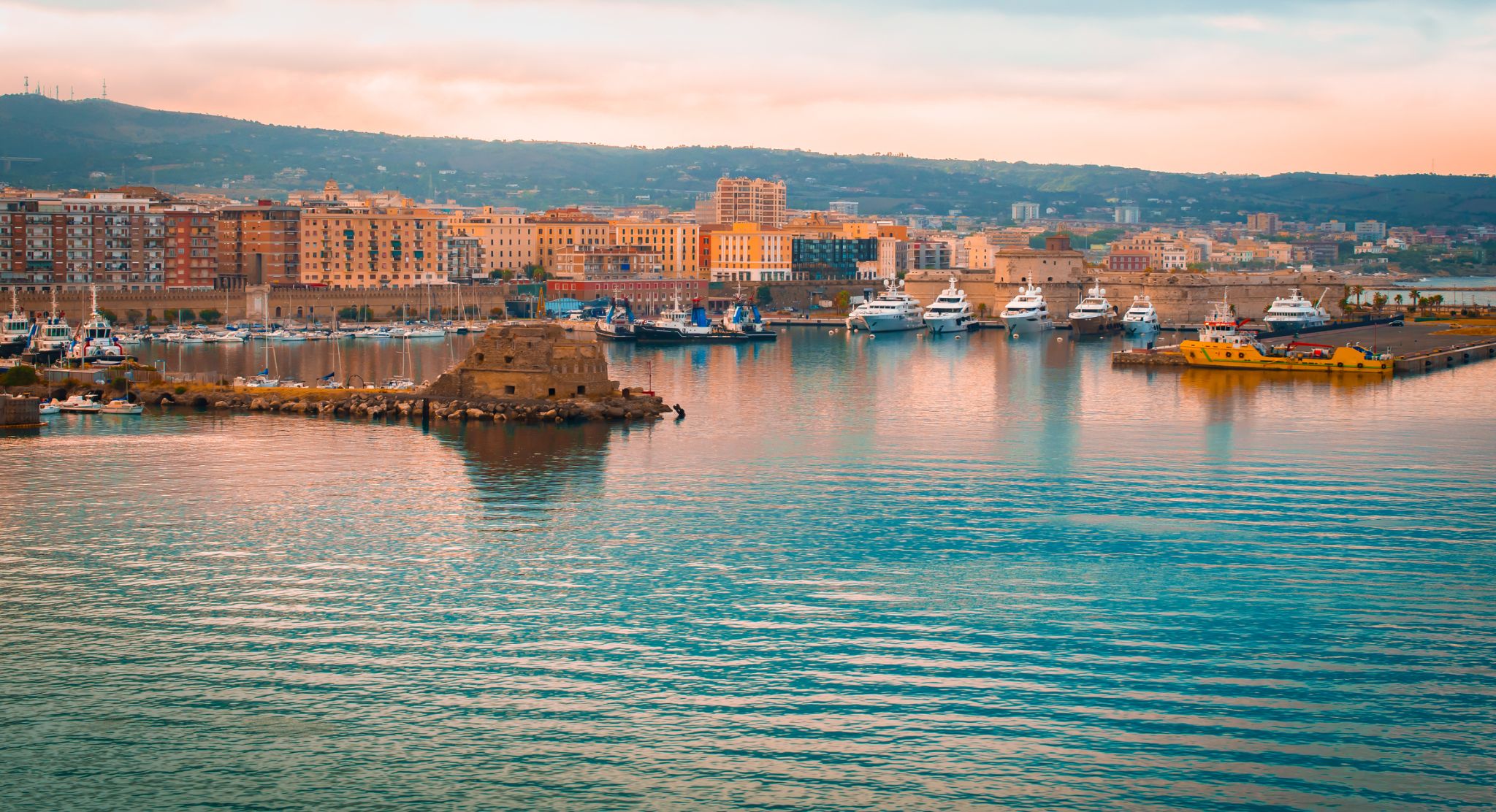
Rzym – jedno z najstarszych miast świata, niegdyś stolica Cesarstwa Rzymskiego, dziś stolica Włoch. Położony na siedmiu wzgórzach nad Tybrem, zachwyca pięknem i majestatem, którego nie da się oddać słowami – trzeba tu być. Każda rzeźba, fontanna czy budowla to dzieło sztuki pozostawione przez dawnych mistrzów. Najsłynniejsze atrakcje, które przyciągają turystów, to Koloseum – miejsce dawnych walk gladiatorów, Fontanna di Trevi, Schody Hiszpańskie, Bazylika św. Piotra – największy kościół Europy, a także Fora Cesarskie i Forum Romanum.


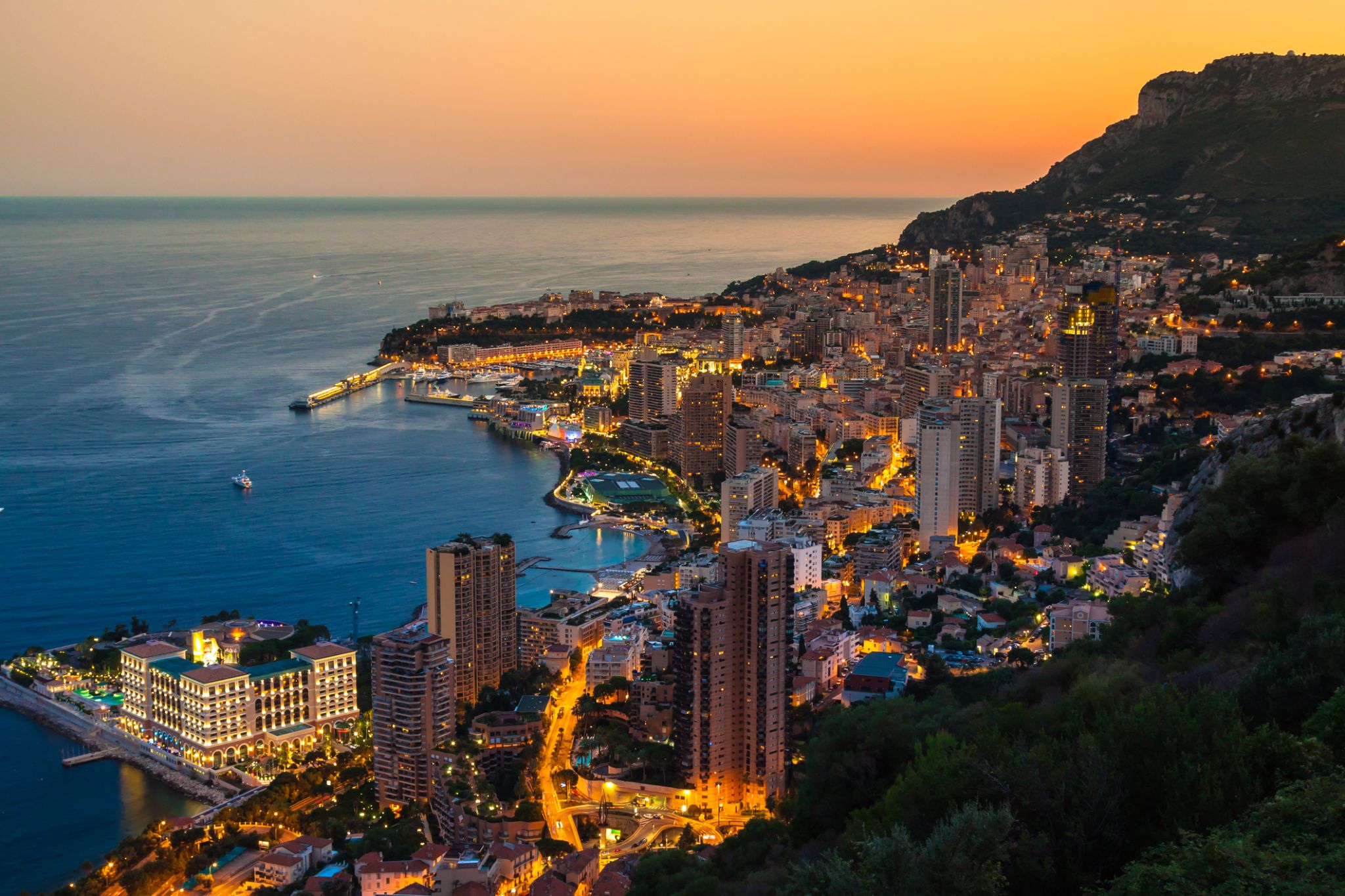
Monte Carlo officially refers to an administrative area of the Principality of Monaco, specifically the ward of Monte Carlo/Spélugues, where the Monte Carlo Casino is located. Informally the name also refers to a larger district, the Monte Carlo Quarter (corresponding to the former municipality of Monte Carlo), which besides Monte Carlo/Spélugues also includes the wards of La Rousse/Saint Roman, Larvotto/Bas Moulins, and Saint Michel. The permanent population of the ward of Monte Carlo is about 3,500, while that of the quarter is about 15,000. Monaco has four traditional quarters. From west to east they are: Fontvieille (the newest), Monaco-Ville (the oldest), La Condamine, and Monte Carlo.
Monte Carlo (literally "Mount Charles") is situated on a prominent escarpment at the base of the Maritime Alpsalong the French Riviera. Near the quarter's western end is the world-famous Place du Casino, the gamblingcenter which has made Monte Carlo "an international byword for the extravagant display and reckless dispersal of wealth". It is also the location of the Hôtel de Paris, the Café de Paris, and the Salle Garnier (the casino theatre which is the home of the Opéra de Monte-Carlo).
The quarter's eastern part includes the community of Larvotto with Monaco's only public beach, as well as its new convention center (the Grimaldi Forum), and the Monte-Carlo Bay Hotel & Resort. At the quarter's eastern border, one crosses into the French town of Beausoleil (sometimes referred to as Monte-Carlo-Supérieur), and just 8 kilometres (5 mi) to its east is the western border of Italy.
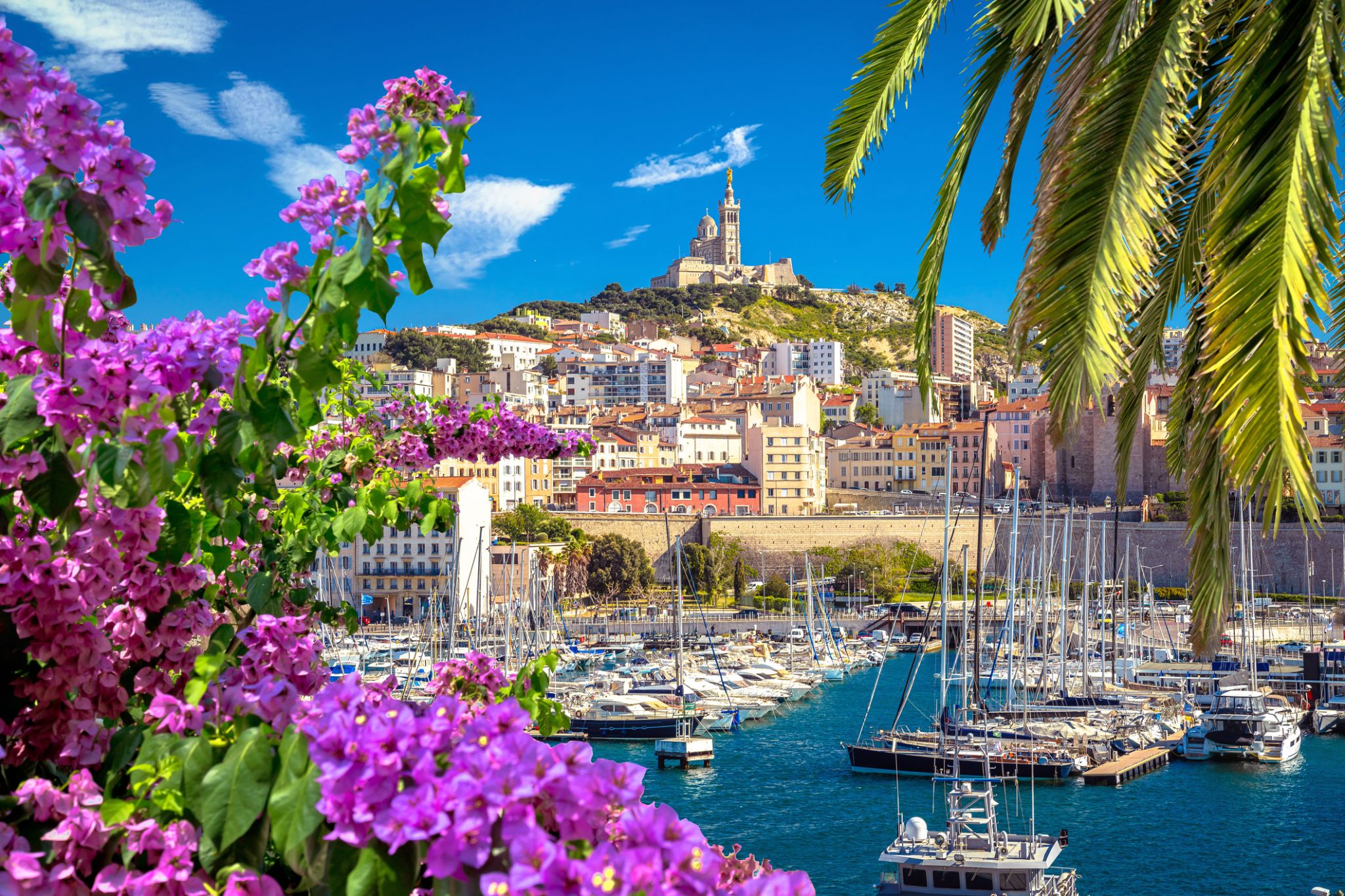
Witamy w gościnnym Prowansie! Bramą do tego regionu jest Marsylia – miasto „Marsylianki”, hymnu Francji, oraz słynnego Zamku If. Symbolem Marsylii jest bazylika Notre-Dame de la Garde. Latem można wziąć udział w oprowadzaniu po francusku (3 EUR), a dopłacając 5 EUR wejść na dach, skąd rozciąga się wspaniała panorama miasta. W pobliżu znajduje się opactwo św. Wiktora z ciekawymi katakumbami.
Rejs turystycznym statkiem na Wyspy Frioul pozwala zobaczyć Zamek If – znany z powieści o hrabim Monte Christo. Kulturalnym sercem Marsylii są Cours Julien i plac Jeana Jaurèsa – pełne księgarni, alternatywnych sklepów, klubów i kawiarni. Dwa razy w tygodniu odbywa się tu wielki targ (czwartek i sobota). Wśród atrakcji miasta znajdują się liczne muzea, galerie i dzieła architektury, a także malownicze zatoki zwane kalankami, uznawane za francuskie fiordy.
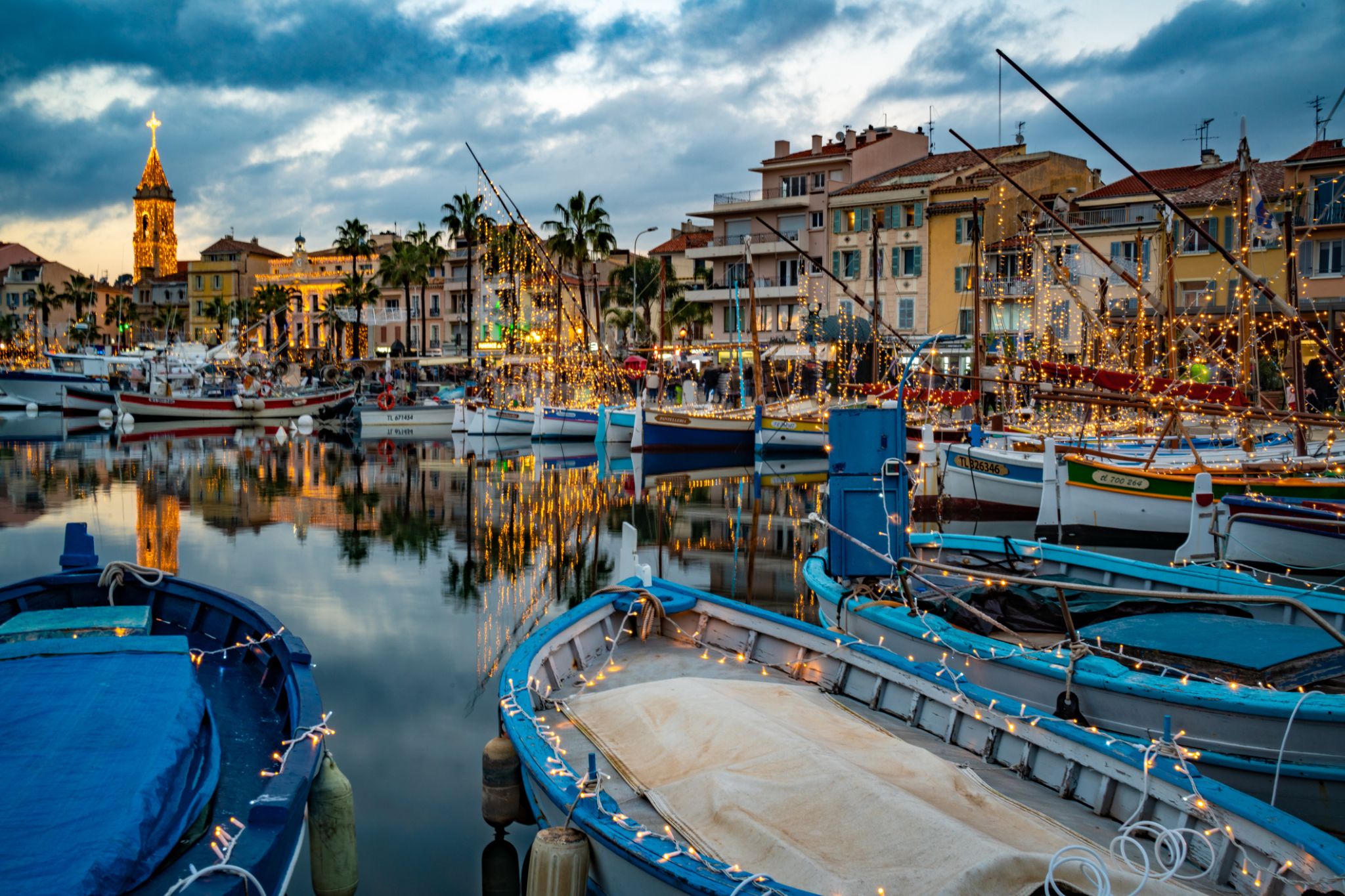
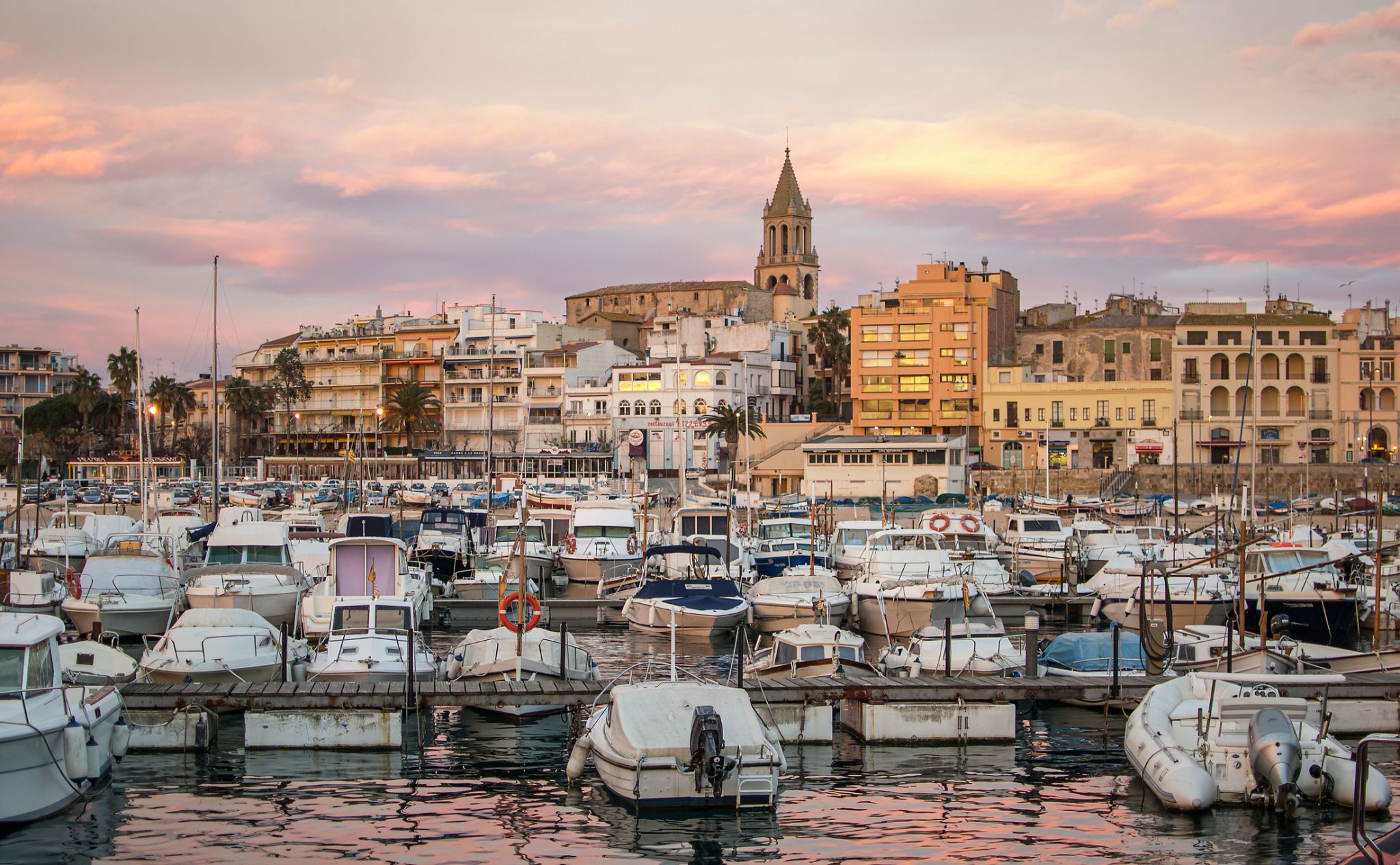
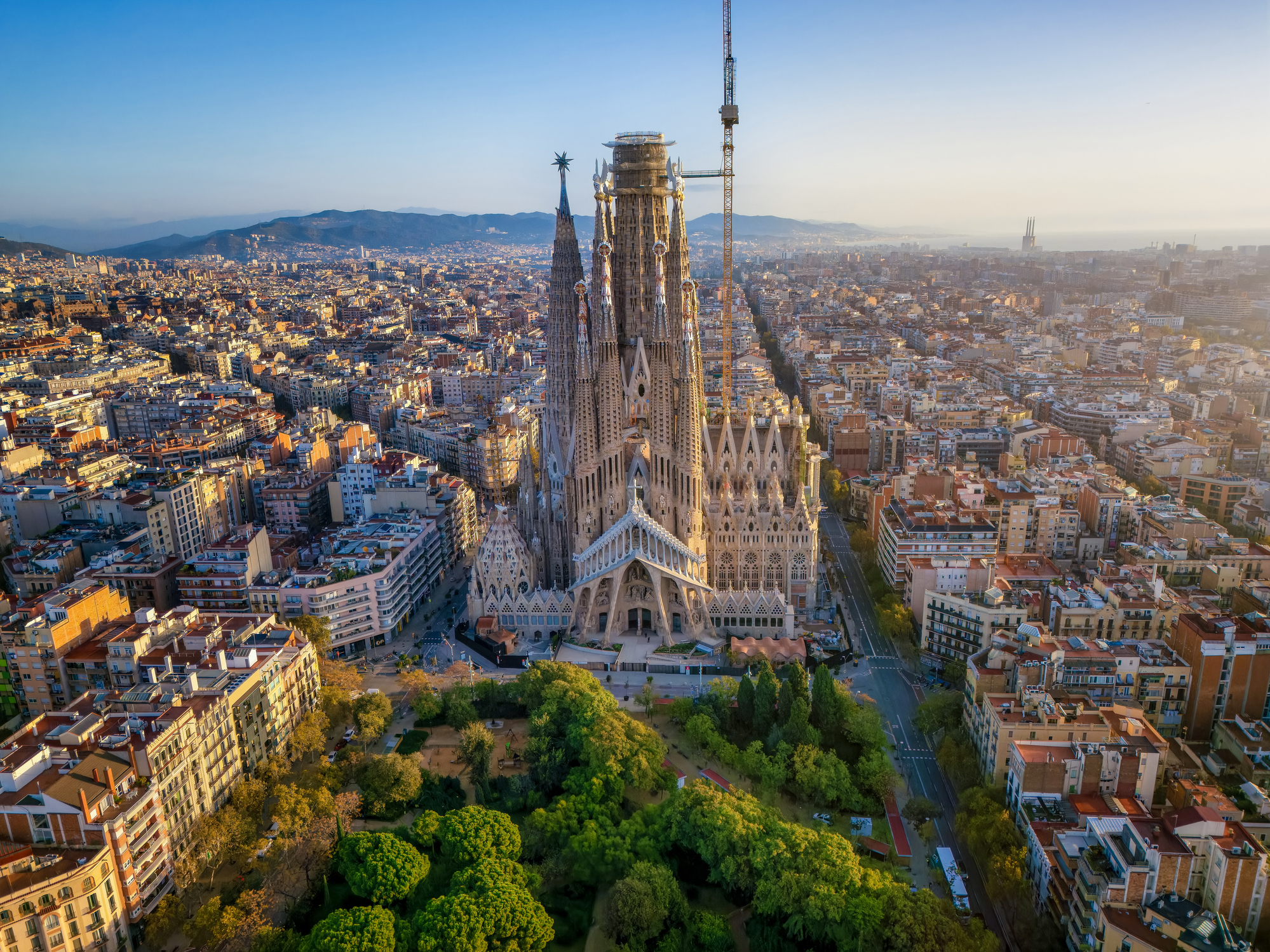
Mając reputację jednego z najatrakcyjniejszych miast w Europie, Barcelona świętuje swoją rolę stolicy Katalonii. Kosmopolityczna i międzynarodowa atmosfera miasta sprawia, że jest to ulubione miejsce wielu ludzi na całym świecie. Miasto jest szczególnie znane ze swojej architektury i sztuki – podróżnicy z całego świata przybywają, aby zobaczyć słynną Sagrada Familia i inne modernistyczne zabytki zaprojektowane przez Gaudiego.
Barcelona to miasto z licznymi i oryginalnymi możliwościami spędzania czasu wolnego, które sprawiają, że chcesz tu wracać. Położona na wybrzeżu Morza Śródziemnego Barcelona słynie z arcydzieł Gaudiego i architektury secesyjnej: jest jednym z najbardziej stylowych miast europejskich.
Miasto jest ośrodkiem nowych trendów w świecie kultury, mody i gastronomii. Dopełnieniem kreatywności artystów i projektantów jest ostrożne podejście do tradycyjnych placówek. Barcelona łączy w sobie urok i spokój historycznego centrum z awangardowymi nowoczesnymi dzielnicami i intensywnym tempem życia w jednym z najczęściej odwiedzanych miast na świecie.

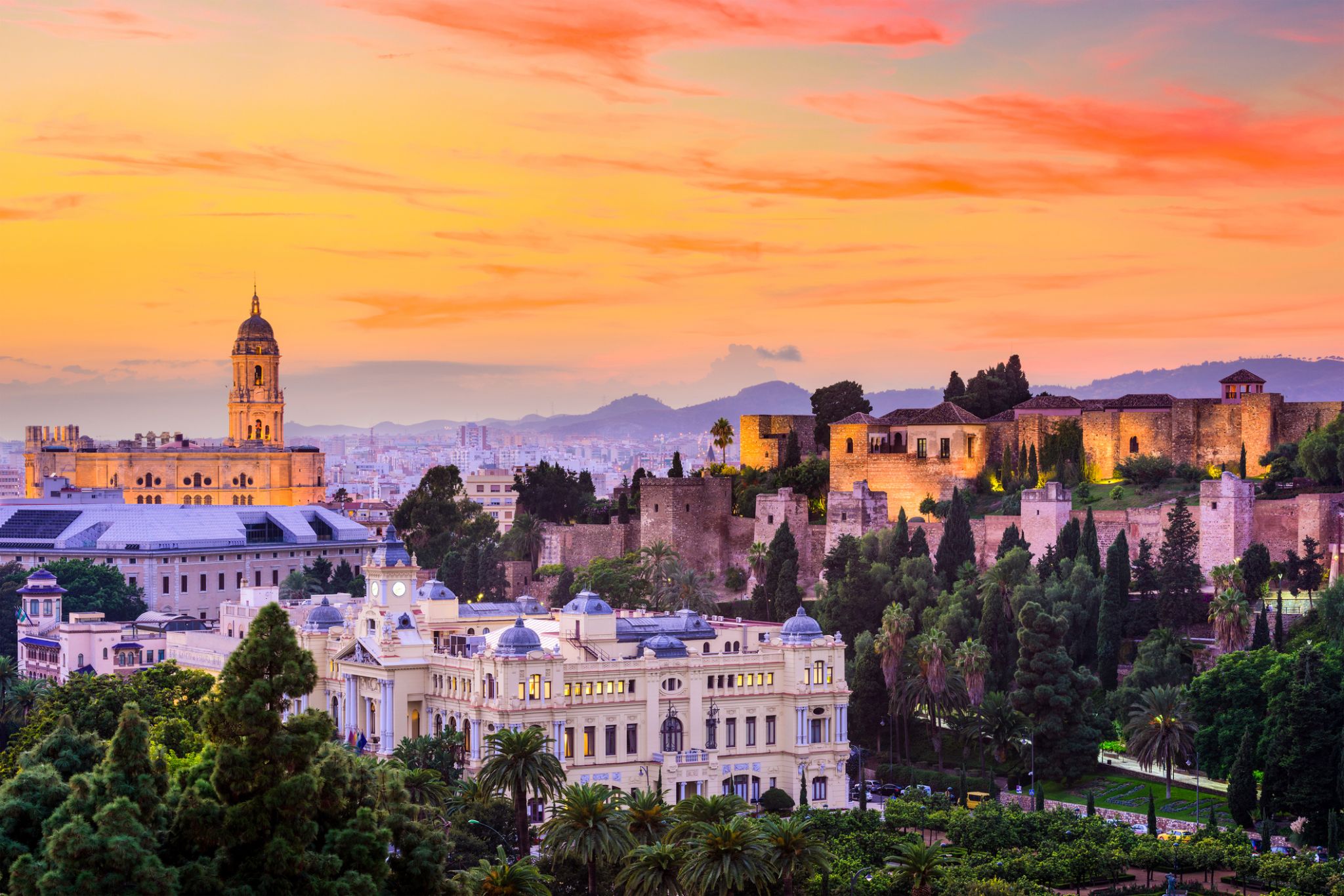
Málaga is a municipality, capital of the Province of Málaga, in the Autonomous Community of Andalusia, Spain. With a population of 569,130 in 2015, it is the second-most populous city of Andalusia and the sixth-largest in Spain. The southernmost large city in Europe, it lies on the Costa del Sol (Coast of the Sun) of the Mediterranean, about 100 kilometres (62.14 miles) east of the Strait of Gibraltar and about 130 km (80.78 mi) north of Africa.
Málaga's history spans about 2,800 years, making it one of the oldest cities in the world. According to most scholars, it was founded about 770 BC by the Phoenicians as Malaka From the 6th century BC the city was under the hegemony of Ancient Carthage, and from 218 BC, it was ruled by the Roman Republic and then empire as Malaca (Latin). After the fall of the empire and the end of Visigothic rule, it was under Islamic rule as Mālaqah for 800 years, but in 1487, the Crown of Castille gained control after the Reconquista. The archaeological remains and monuments from the Phoenician, Roman, Arabic and Christian eras make the historic center of the city an "open museum", displaying its history of nearly 3,000 years.
This important cultural infrastructure and the artistic heritage have culminated in the nomination of Málaga as a candidate for the 2016 European Capital of Culture.
The painter and sculptor Pablo Picasso, Hebrew poet and Jewish philosopher Solomon Ibn Gabirol and the actor Antonio Banderas were born in Málaga. The magnum opus of Cuban composer Ernesto Lecuona, "Malagueña", is named after the music of this region of Spain.
The most important business sectors in Málaga are tourism, construction and technology services, but other sectors such as transportation and logistics are beginning to expand. The Andalusia Technology Park (PTA), located in Málaga, has enjoyed significant growth since its inauguration in 1992. Málaga is the main economic and financial centre of southern Spain, home of the region's largest bank, Unicaja, and the fourth-ranking city in economic activity in Spain behind Madrid, Barcelona and Valencia.
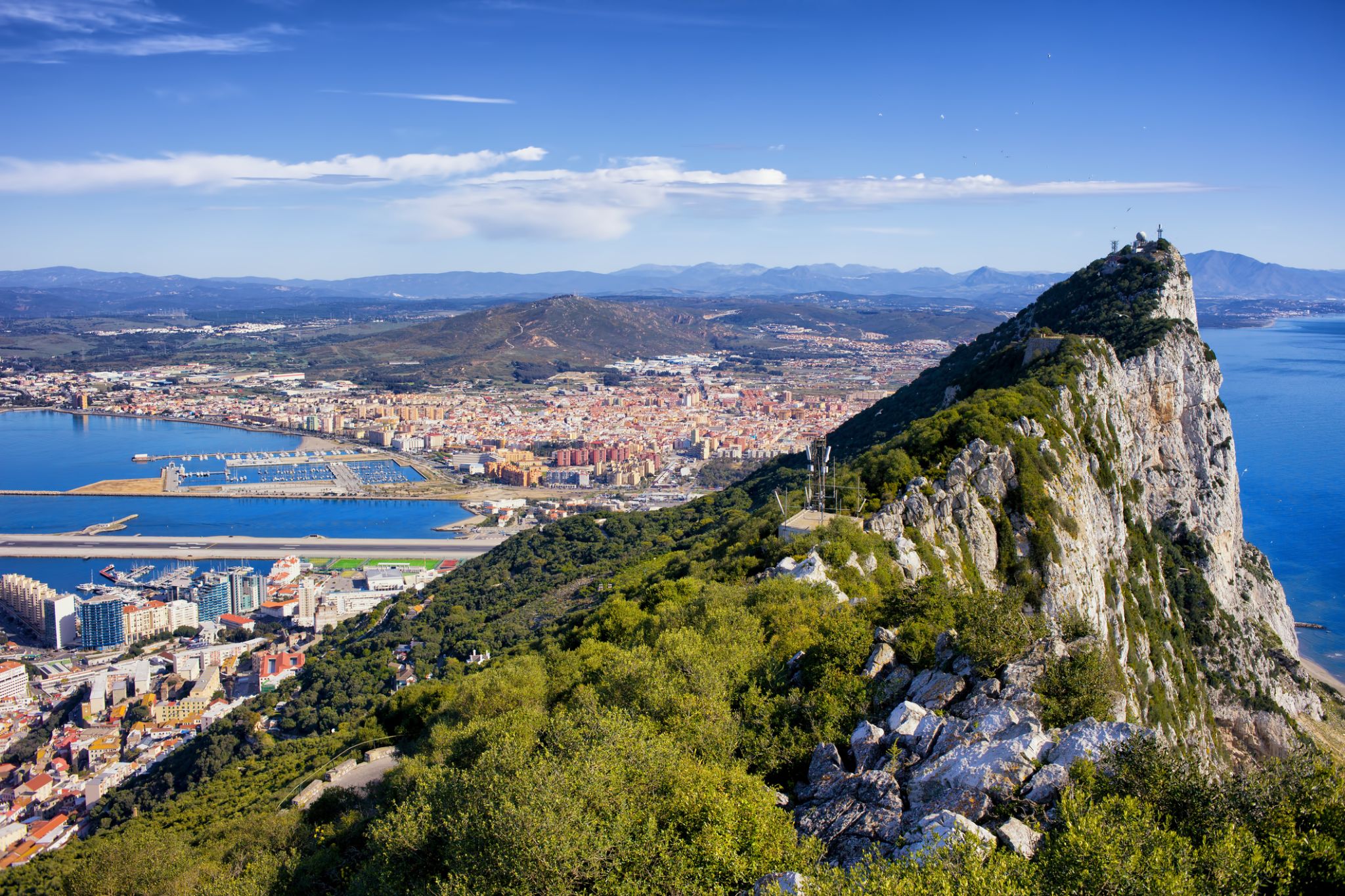
Gibraltar is a British Overseas Territory located at the southern tip of the Iberian Peninsula. It has an area of 6.7 km2 (2.6 sq mi) and is bordered to the north by Spain. The landscape is dominated by the Rock of Gibraltar at the foot of which is a densely populated town area, home to over 30,000 people, primarily Gibraltarians. It shares a maritime border with Morocco.
In 1704, Anglo-Dutch forces captured Gibraltar from Spain during the War of the Spanish Succession on behalf of the Habsburg claim to the Spanish throne. The territory was ceded to Great Britain in perpetuity under the Treaty of Utrechtin 1713. During World War II it was an important base for the Royal Navy as it controlled the entrance and exit to the Mediterranean Sea, which is only 8 miles (13 km) wide at this naval choke point. It remains strategically important, with half the world's seaborne trade passing through the strait. Today Gibraltar's economy is based largely on tourism, online gambling, financial services and cargo ship refuelling.
The sovereignty of Gibraltar is a point of contention in Anglo-Spanish relations because Spain asserts a claim to the territory. Gibraltarians rejected proposals for Spanish sovereignty in a 1967 referendum and, in a 2002 referendum, the idea of shared sovereignty was also rejected.
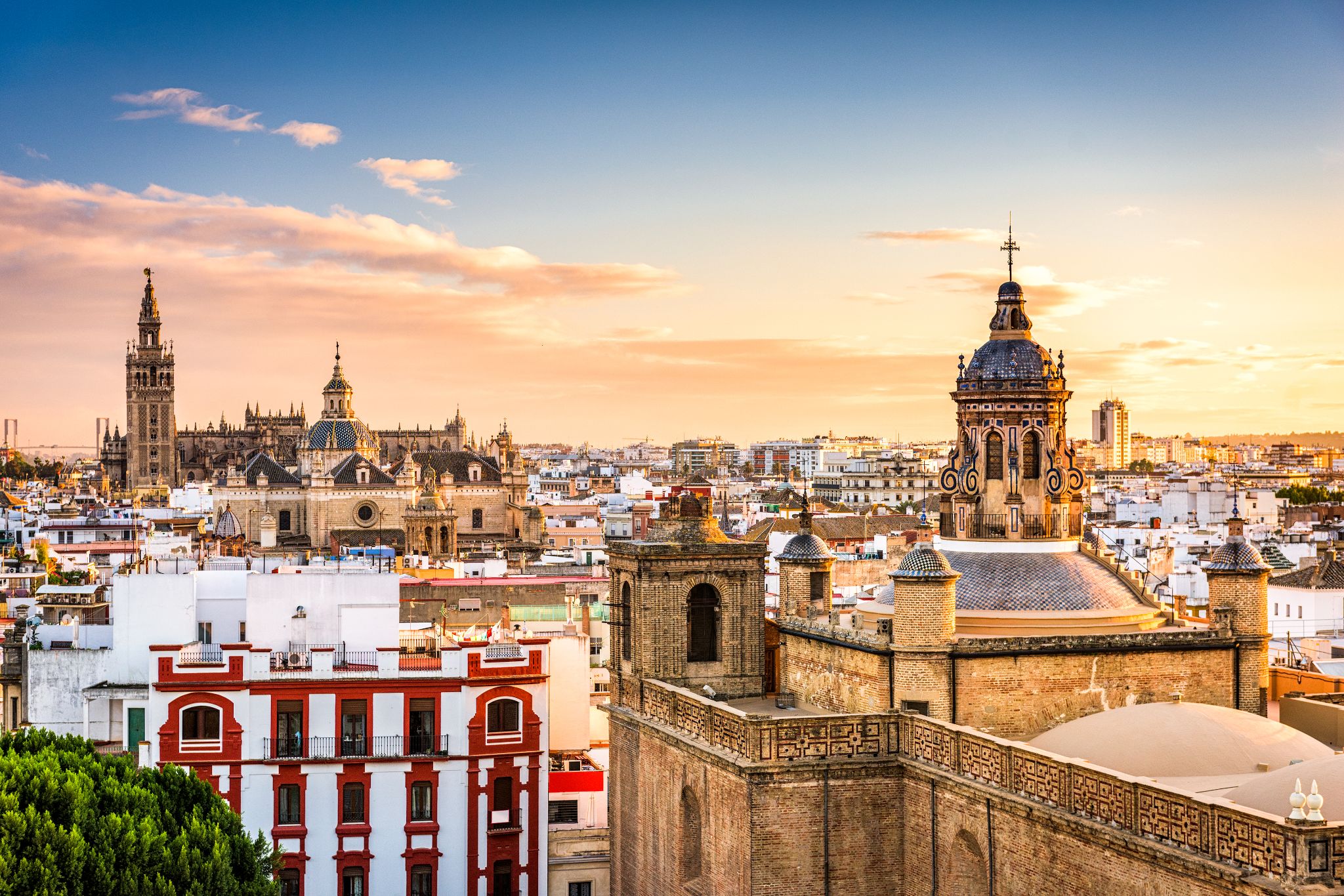
Sewilla jest stolicą i największym miastem autonomicznej wspólnoty Andaluzji oraz prowincji Sewilla w Hiszpanii. Położona jest na równinie rzeki Gwadalkiwir. Mieszkańców miasta nazywa się sevillanos (forma żeńska: sevillanas) lub hispalenses, od rzymskiej nazwy miasta, Hispalis. Sewilla liczy około 690 000 mieszkańców (dane z 2016 roku), a jej obszar metropolitalny około 1,5 miliona, co czyni ją czwartym co do wielkości miastem w Hiszpanii i 30. najbardziej zaludnioną gminą w Unii Europejskiej. Jej Stare Miasto o powierzchni 4 kilometrów kwadratowych (2 mile kwadratowe) zawiera trzy obiekty światowego dziedzictwa UNESCO: zespół pałacowy Alcázar, Katedrę i Archiwum Indii. Port w Sewilli, położony około 80 kilometrów (50 mil) od Oceanu Atlantyckiego, jest jedynym portem rzecznym w Hiszpanii.

Sewilla jest stolicą i największym miastem autonomicznej wspólnoty Andaluzji oraz prowincji Sewilla w Hiszpanii. Położona jest na równinie rzeki Gwadalkiwir. Mieszkańców miasta nazywa się sevillanos (forma żeńska: sevillanas) lub hispalenses, od rzymskiej nazwy miasta, Hispalis. Sewilla liczy około 690 000 mieszkańców (dane z 2016 roku), a jej obszar metropolitalny około 1,5 miliona, co czyni ją czwartym co do wielkości miastem w Hiszpanii i 30. najbardziej zaludnioną gminą w Unii Europejskiej. Jej Stare Miasto o powierzchni 4 kilometrów kwadratowych (2 mile kwadratowe) zawiera trzy obiekty światowego dziedzictwa UNESCO: zespół pałacowy Alcázar, Katedrę i Archiwum Indii. Port w Sewilli, położony około 80 kilometrów (50 mil) od Oceanu Atlantyckiego, jest jedynym portem rzecznym w Hiszpanii.
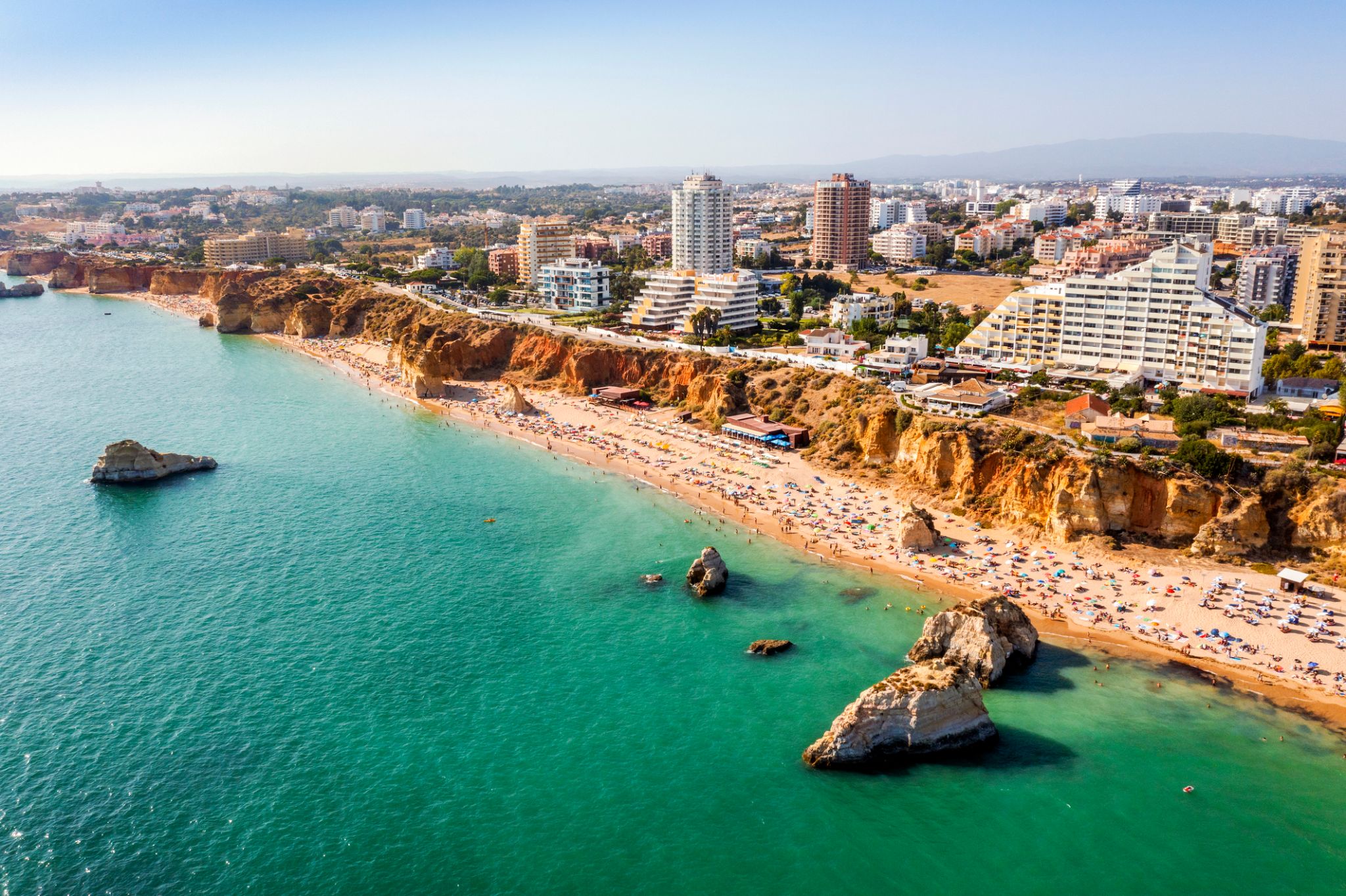
Portimão is a town and a municipality in the district of Faro, in the Algarve region of southern Portugal. The population in 2011 was 55,614, in an area of 182.06 km². It was formerly known as Vila Nova de Portimão. In 1924, it was incorporated as a cidadeand became known merely as Portimão. Historically a fishing and shipbuilding centre, it has nonetheless developed into a strong tourist centre oriented along its beaches and southern coast. The two most populous towns in the Algarve are Portimão and Faro.
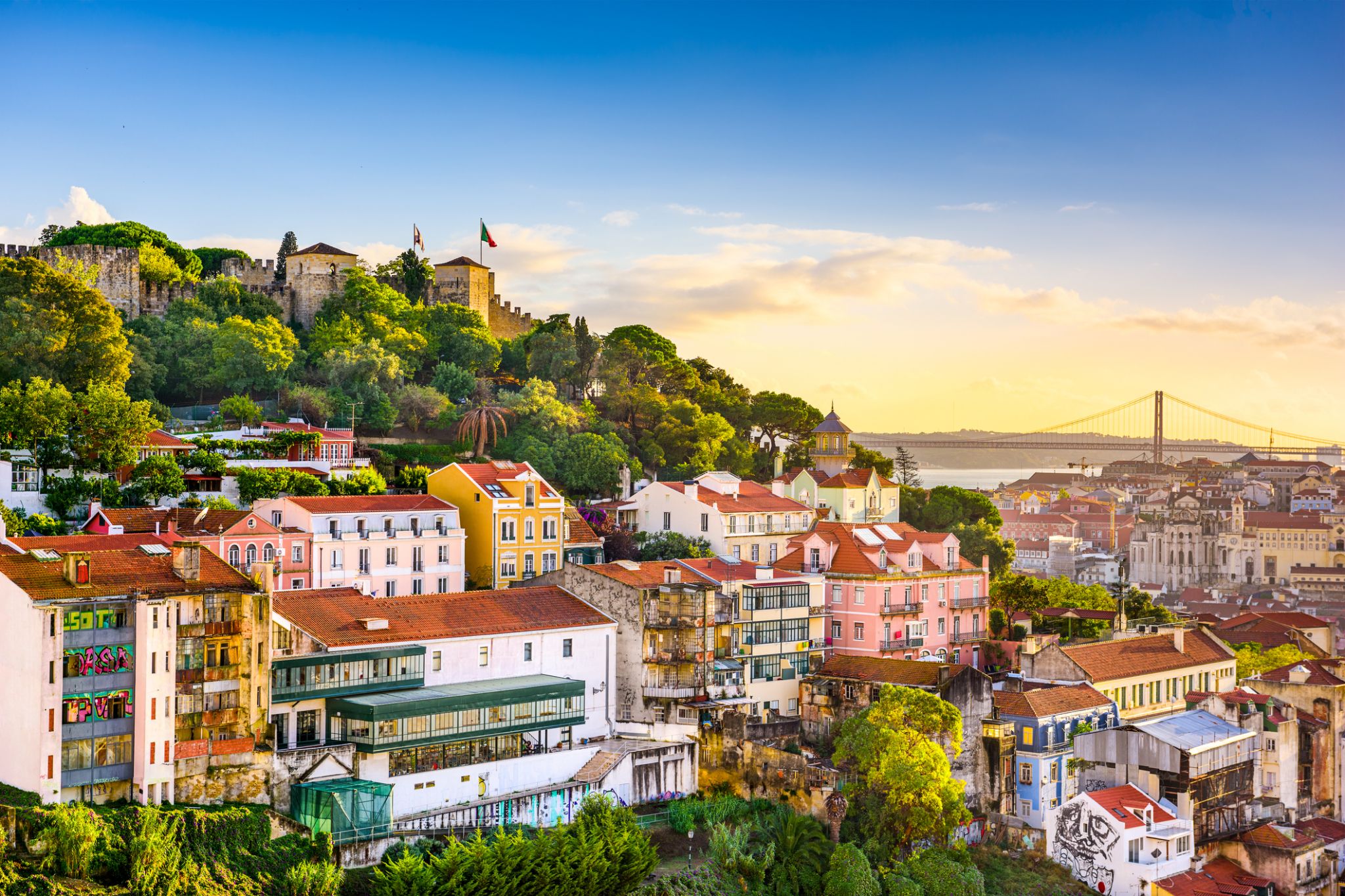
Lizbona jest stolicą i największym miastem Portugalii, z szacowaną populacją 505 526 mieszkańców w granicach administracyjnych na obszarze 100,05 km². Jej obszar miejski rozciąga się poza granice administracyjne miasta i liczy około 2,8 miliona mieszkańców, co czyni go jedenastym najbardziej zaludnionym obszarem miejskim w Unii Europejskiej. Około 3 milionów ludzi mieszka w aglomeracji lizbońskiej (która stanowi około 27% populacji kraju). Jest to najbardziej wysunięta na zachód stolica kontynentalnej Europy i jedyna położona nad Oceanem Atlantyckim. Lizbona leży na zachodnim Półwyspie Iberyjskim nad Oceanem Atlantyckim i rzeką Tag. Najbardziej wysunięte na zachód obszary jej aglomeracji tworzą najbardziej wysunięty na zachód punkt kontynentalnej Europy, znany jako Cabo da Roca, położony w górach Sintra.
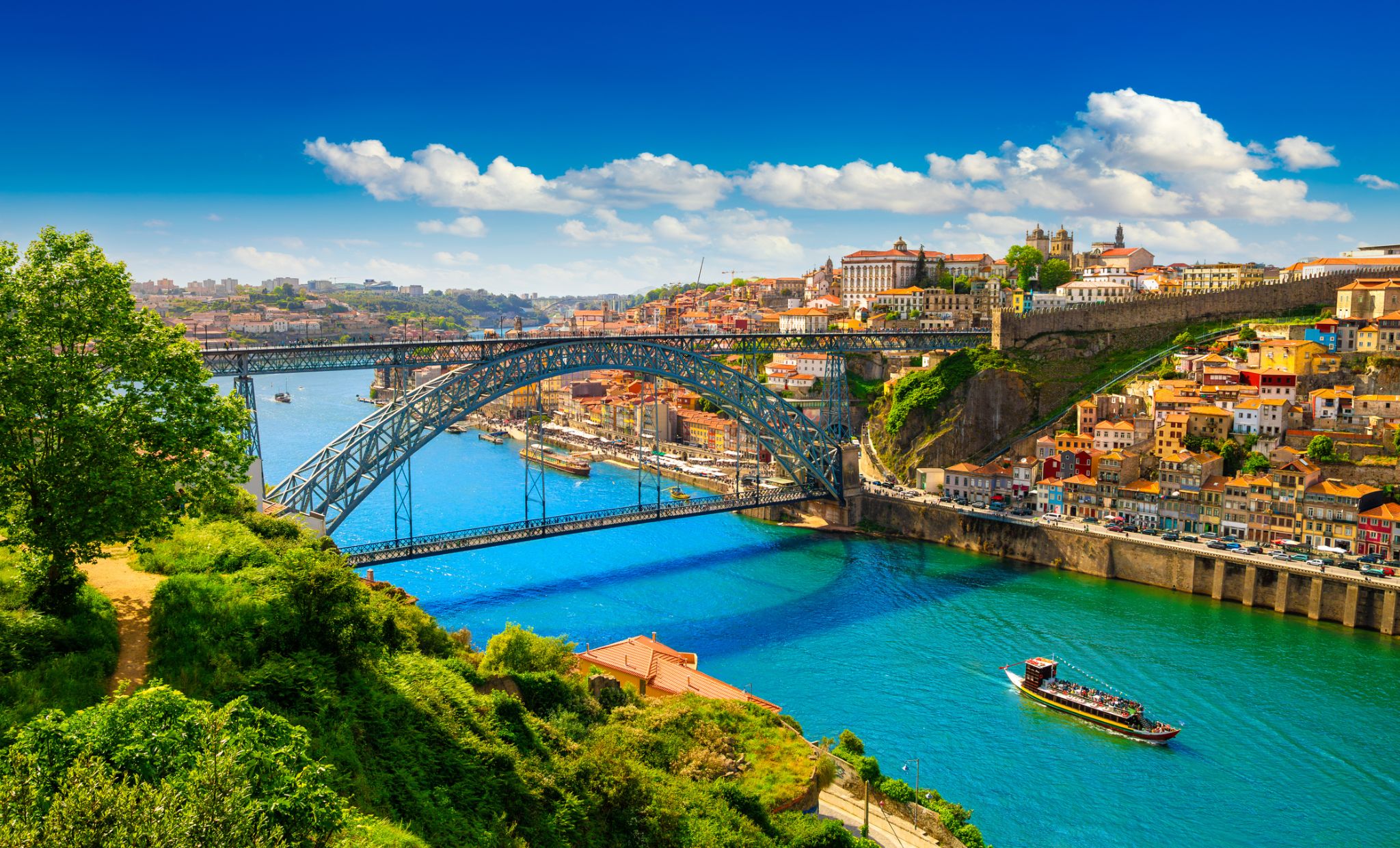
Порту является вторым по величине городом Португалии после Лиссабона и одним из крупных городских районов Пиренейского полуострова. Население самого города составляет 237 591 человек, а в столичном районе Порту, который выходит за административные пределы города, проживает 1,9 миллиона человек (2011 год) на площади 2 395 км2 (925 кв. Миль), что делает его вторым самый большой городской район в Португалии. Он признан глобальным городом гамма-уровня Исследовательской группой по глобализации и глобальным городам (GaWC), единственным португальским городом, кроме Лиссабона, который был признан глобальным городом.
Расположенный вдоль устья реки Дору на севере Португалии, Порту является одним из старейших европейских центров, и его историческое ядро было объявлено ЮНЕСКО объектом Всемирного наследия в 1996 году. Западная часть его городской территории простирается до береговой линии Атлантического океана. Его поселение датируется много веков, когда он был форпостом Римской империи. Его объединенное кельтско-латинское имя, Portus Cale, было названо происхождением названия «Португалия», основанного на транслитерации и устной эволюции от латыни. На португальском языке название города пишется с определенной статьей о Порту ; следовательно, его английское название произошло от неправильного толкования устного произношения и упоминается как Опорто в современной литературе и многими ораторами.

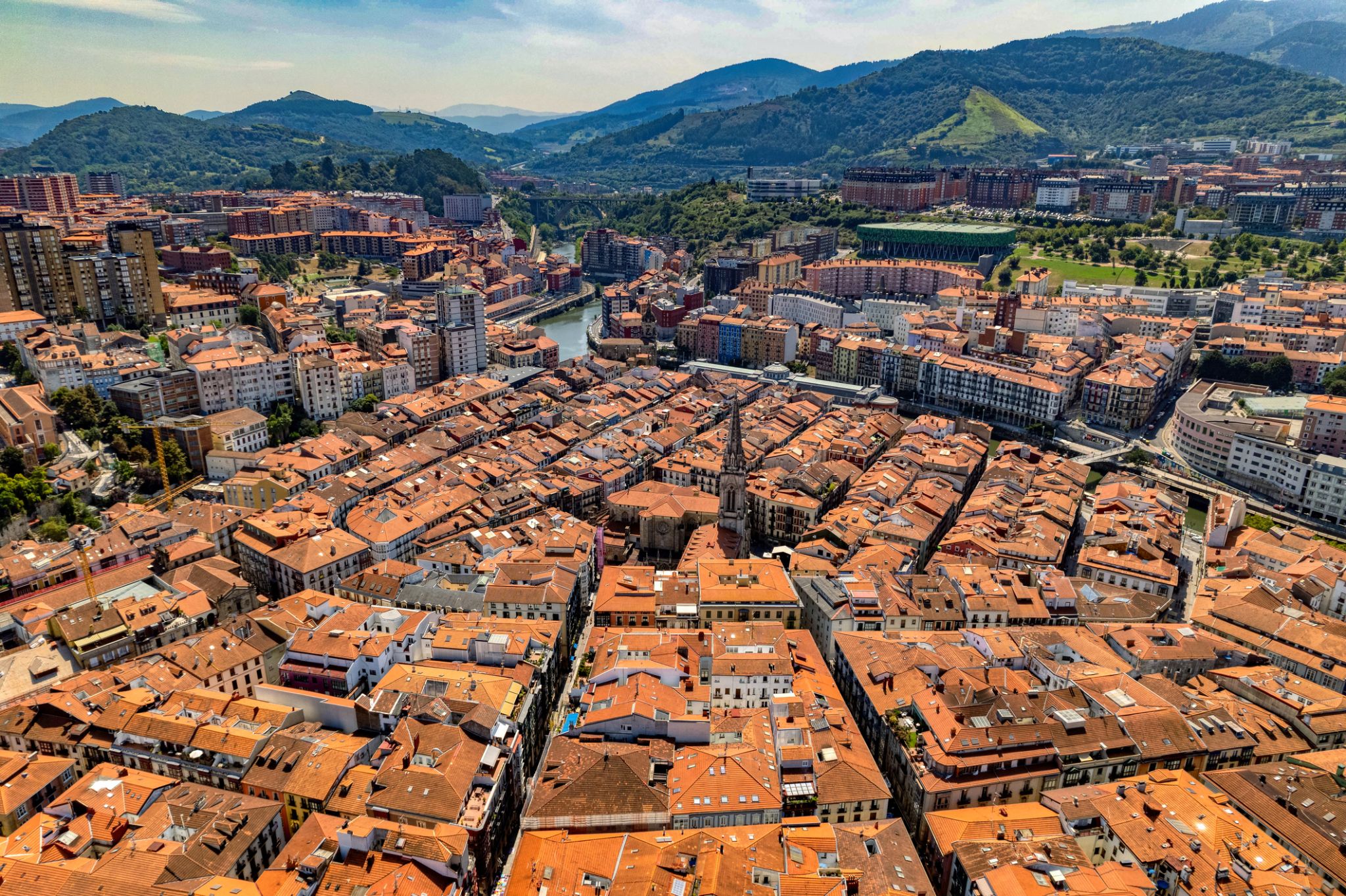
Bilbao is a city in northern Spain, the largest city in the province of Biscay and in the Basque Country as a whole. It is also the largest city proper in northern Spain. Bilbao is the tenth largest city in Spain, with a population of 345,141 as of 2015. The Bilbao metropolitan area has roughly 1 million inhabitants, making it one of the most populous metropolitan areas in northern Spain; with a population of 875,552 the comarca of Greater Bilbao is the fifth-largest urban area in Spain. Bilbao is also the main urban area in what is defined as the Greater Basque region.
Bilbao is situated in the north-central part of Spain, some 16 kilometres (10 mi) south of the Bay of Biscay, where the economic social development is located, where the estuary of Bilbao is formed. Its main urban core is surrounded by two small mountain ranges with an average elevation of 400 metres (1,300 ft). Its climate is shaped by the Bay of Biscay low-pressure systems and mild air, moderating summer temperatures by Iberian standards, with low sunshine and high rainfall. The annual temperature range is low for its latitude.
After its foundation in the early 14th century by Diego López V de Haro, head of the powerful Haro family, Bilbao was a commercial hub of the Basque Country that enjoyed significant importance in Green Spain. This was due to its port activity based on the export of iron extracted from the Biscayan quarries. Throughout the nineteenth century and the beginning of the twentieth, Bilbao experienced heavy industrialisation, making it the centre of the second-most industrialised region of Spain, behind Barcelona. At the same time an extraordinary population explosion prompted the annexation of several adjacent municipalities. Nowadays, Bilbao is a vigorous service city that is experiencing an ongoing social, economic, and aesthetic revitalisation process, started by the iconic Bilbao Guggenheim Museum, and continued by infrastructure investments, such as the airport terminal, the rapid transit system, the tram line, the Azkuna Zentroa, and the currently under development Abandoibarra and Zorrozaurrerenewal projects.
Bilbao is also home to football club Athletic Club de Bilbao, a significant symbol for Basque nationalism due to its promotion of only Basque players and one of the most successful clubs in Spanish football history.
On 19 May 2010, the city of Bilbao was recognised with the Lee Kuan Yew World City Prize, awarded by the city state of Singapore, in collaboration with the Swedish Nobel Academy. Considered the Nobel Prize for urbanism, it was handed out on 29 June 2010. On 7 January 2013, its mayor, Iñaki Azkuna, received the 2012 World Mayor Prize awarded every two years by the British foundation The City Mayors Foundation, in recognition of the urban transformation experienced by the Biscayan capital since the 1990s. On 8 November 2017, Bilbao was chosen the Best European City 2018 at The Urbanism Awards 2018, awarded by the international organisation The Academy of Urbanism.

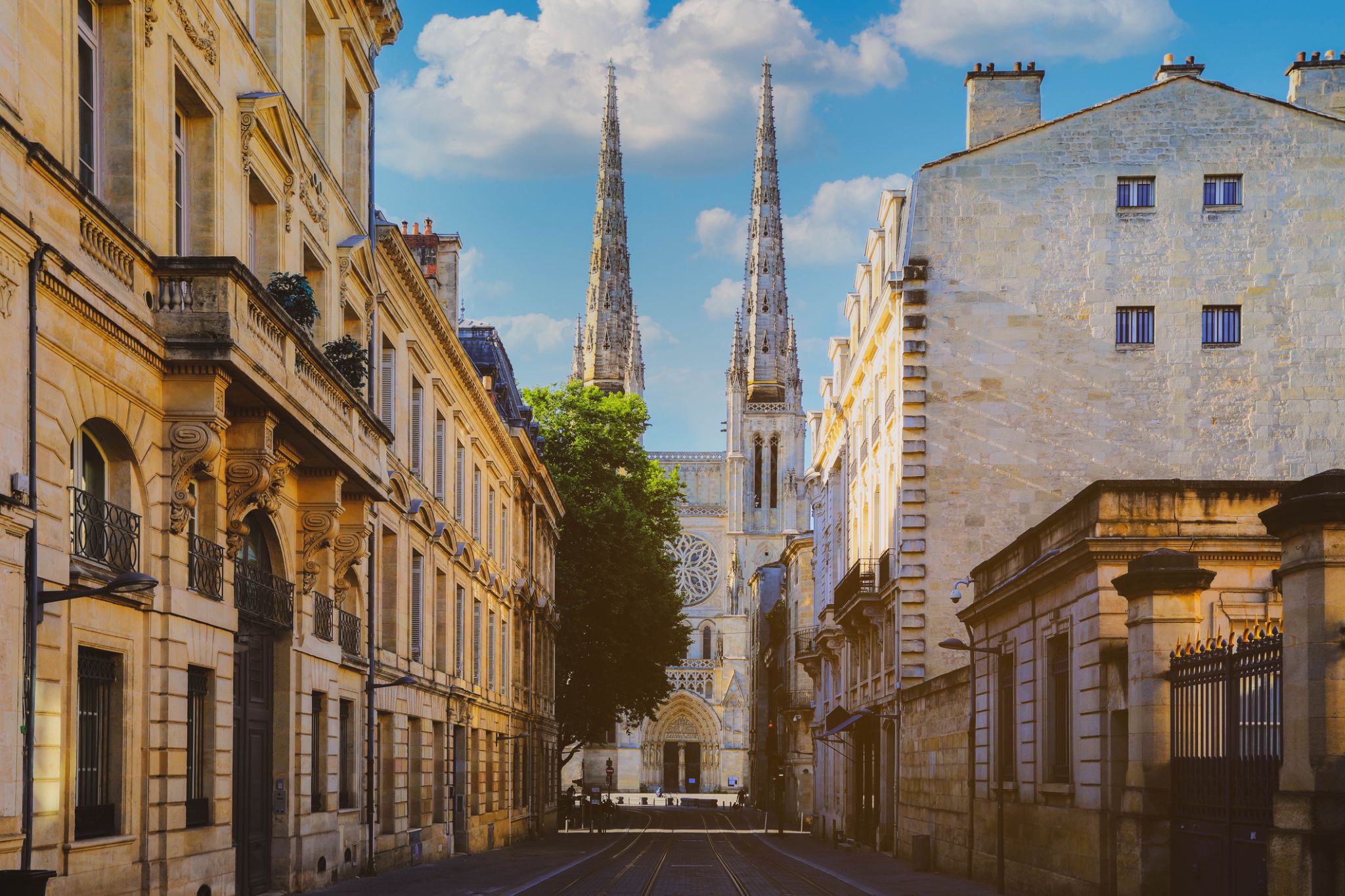
Bordeaux jest miastem portowym nad Garonną w departamencie Żyronda w południowo-zachodniej Francji.
Sama gmina Bordeaux liczy 246 586 mieszkańców (2014). Wraz z przedmieściami i miastami satelickimi Bordeaux jest centrum metropolii Bordeaux. Z 1 195 335 mieszkańcami w obszarze metropolitalnym jest szóstym co do wielkości we Francji, po Paryżu, Marsylii, Lyonie, Tuluzie i Lille. Jest stolicą regionu Nowa Akwitania, a także prefekturą departamentu Żyronda. Jego mieszkańców nazywa się "Bordelais" (mężczyźni) lub "Bordelaises" (kobiety). Określenie "Bordelais" może również odnosić się do miasta i jego okolic.
Będąc w centrum ważnego regionu uprawy i produkcji wina, Bordeaux pozostaje znaczącym ośrodkiem i wywiera znaczący wpływ na światową branżę winiarską, chociaż w granicach miasta nie odbywa się żadna produkcja wina. Jest siedzibą głównych światowych targów wina, Vinexpo, a gospodarka winiarska w obszarze metropolitalnym przynosi 14,5 miliarda euro rocznie. Wino z Bordeaux jest produkowane w regionie od VIII wieku. Historyczna część miasta znajduje się na Liście Światowego Dziedzictwa UNESCO jako "wyjątkowy zespół miejski i architektoniczny" z XVIII wieku. Po Paryżu Bordeaux ma największą liczbę zachowanych zabytkowych budynków spośród wszystkich miast we Francji.

Bordeaux jest miastem portowym nad Garonną w departamencie Żyronda w południowo-zachodniej Francji.
Sama gmina Bordeaux liczy 246 586 mieszkańców (2014). Wraz z przedmieściami i miastami satelickimi Bordeaux jest centrum metropolii Bordeaux. Z 1 195 335 mieszkańcami w obszarze metropolitalnym jest szóstym co do wielkości we Francji, po Paryżu, Marsylii, Lyonie, Tuluzie i Lille. Jest stolicą regionu Nowa Akwitania, a także prefekturą departamentu Żyronda. Jego mieszkańców nazywa się "Bordelais" (mężczyźni) lub "Bordelaises" (kobiety). Określenie "Bordelais" może również odnosić się do miasta i jego okolic.
Będąc w centrum ważnego regionu uprawy i produkcji wina, Bordeaux pozostaje znaczącym ośrodkiem i wywiera znaczący wpływ na światową branżę winiarską, chociaż w granicach miasta nie odbywa się żadna produkcja wina. Jest siedzibą głównych światowych targów wina, Vinexpo, a gospodarka winiarska w obszarze metropolitalnym przynosi 14,5 miliarda euro rocznie. Wino z Bordeaux jest produkowane w regionie od VIII wieku. Historyczna część miasta znajduje się na Liście Światowego Dziedzictwa UNESCO jako "wyjątkowy zespół miejski i architektoniczny" z XVIII wieku. Po Paryżu Bordeaux ma największą liczbę zachowanych zabytkowych budynków spośród wszystkich miast we Francji.
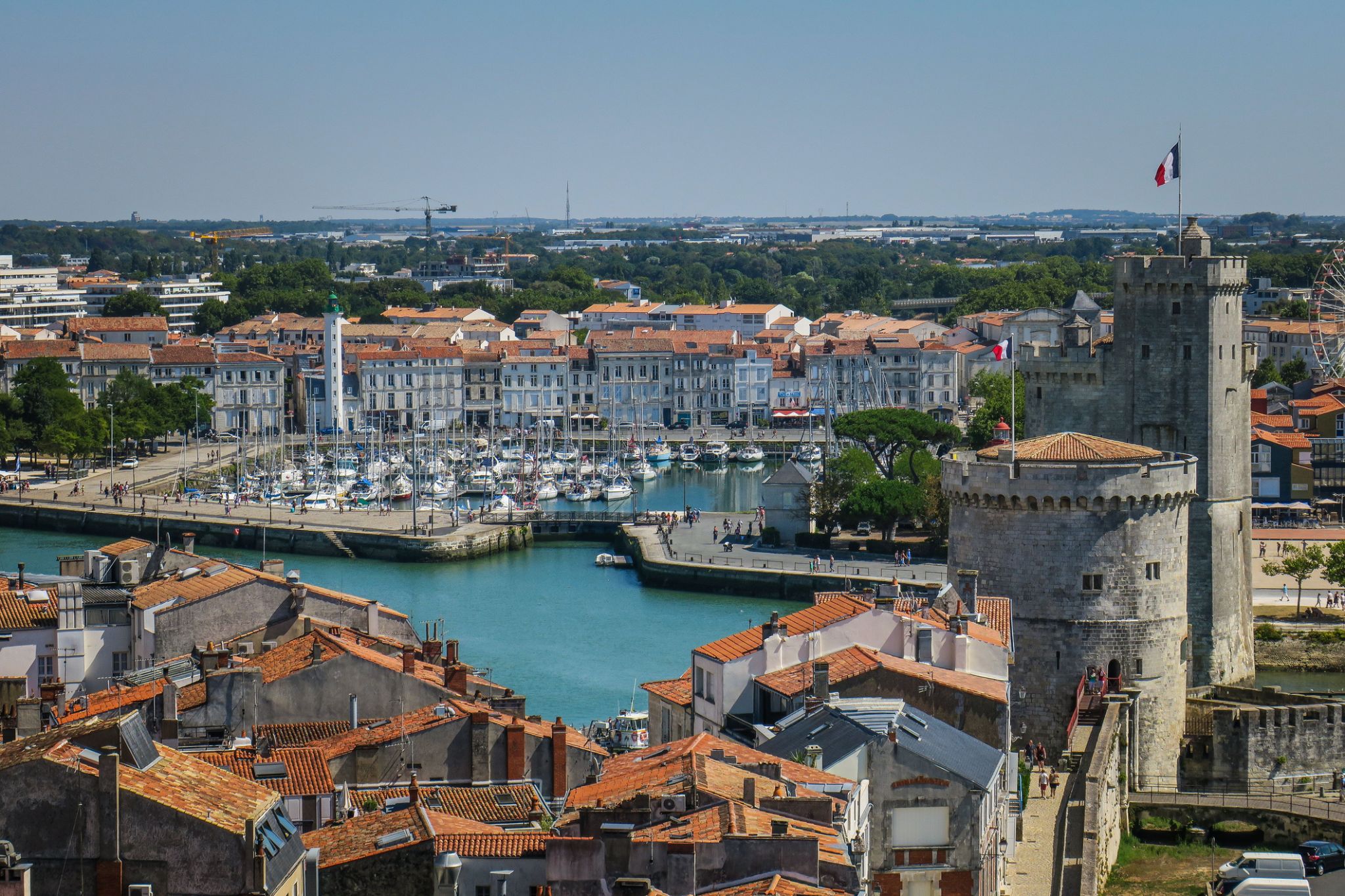
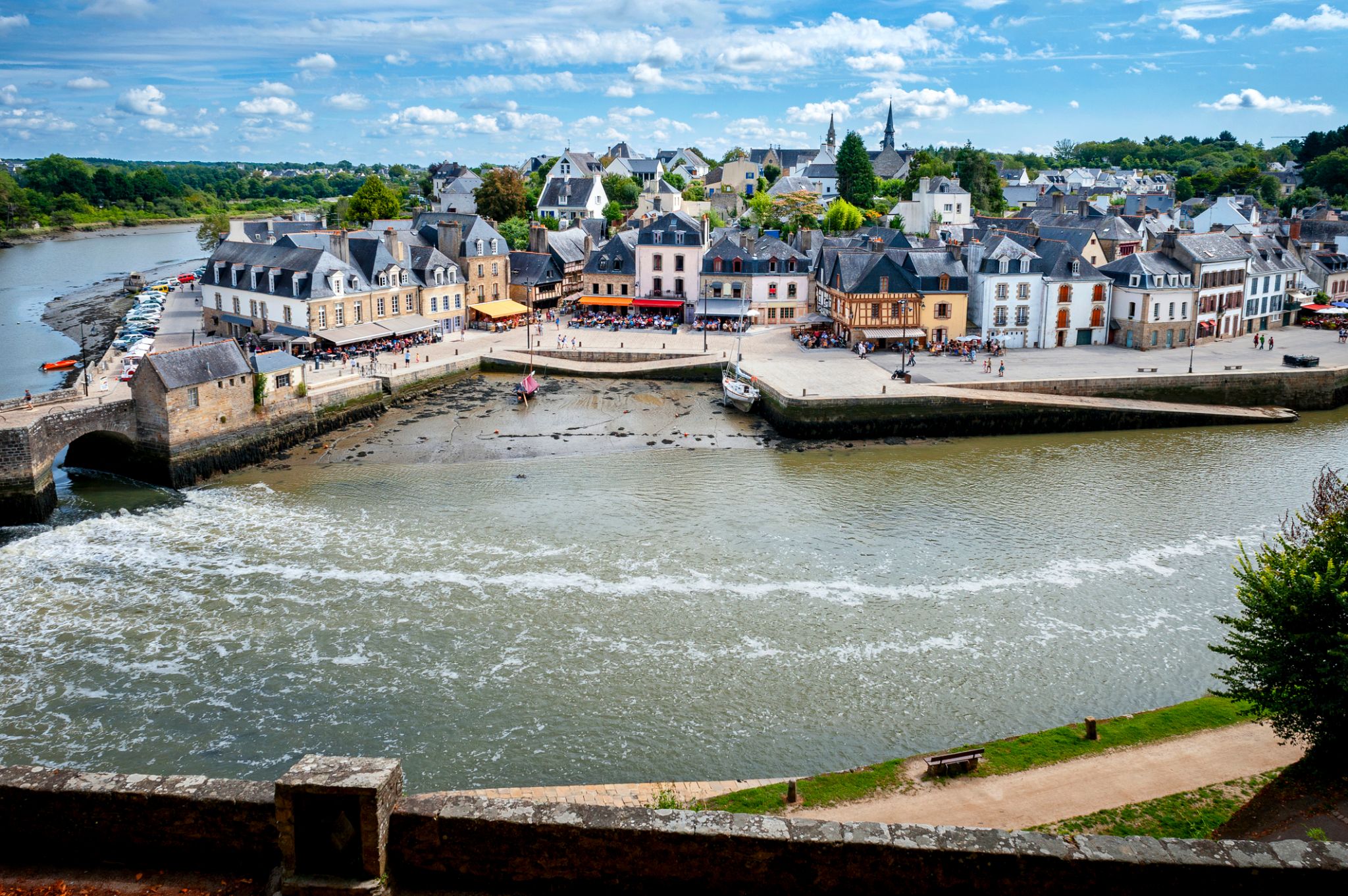
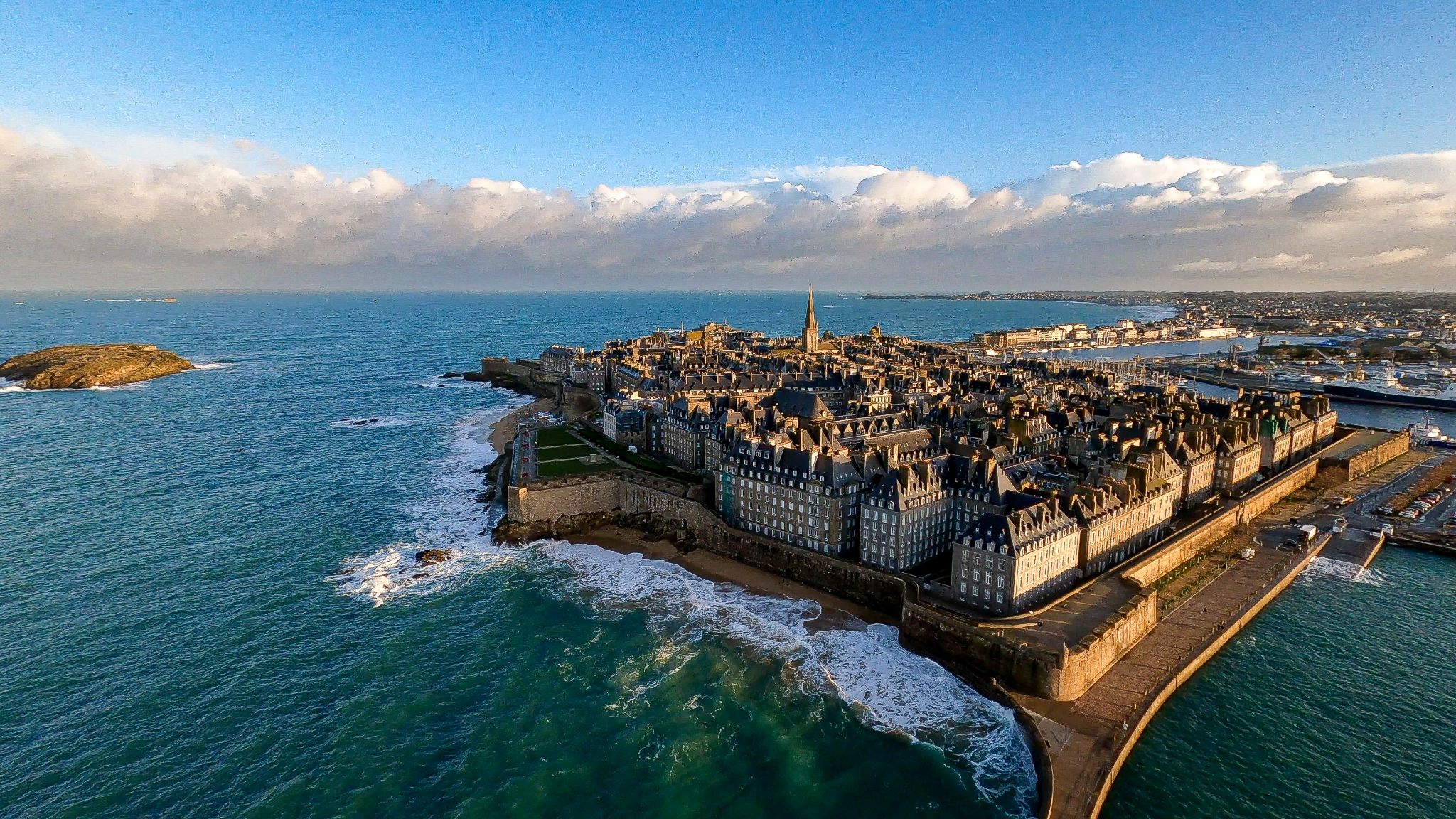
Morska bryza i krzyki mew towarzyszą Ci w Saint-Malo, mieście na wybrzeżu Bretanii, które zachowało ducha morskich przygód i niezależności. Wysokie mury obronne otaczają tu wąskie uliczki, a brukowane ścieżki prowadzą do przytulnych kawiarni z widokiem na ocean. Historia piratów i żeglarzy ożywa, gdy spacerujesz po bastionach, obserwujesz, jak przypływy zmieniają linię brzegową, lub wybierasz się łodzią na słynną wyspę Grand Bé, gdzie pochowany jest pisarz Chateaubriand.
W Saint-Malo możesz cieszyć się świeżymi owocami morza w lokalnych restauracjach, spróbować ostryg złowionych w pobliskich wodach lub urządzić piknik na piaszczystych plażach, które odsłaniają się podczas odpływu. Miasto daje poczucie jednoczesnego spokoju i wolności, łącząc malowniczą architekturę z energią Atlantyku, a morski wiatr i zapach soli w powietrzu przypominają, że tutaj historia i natura są zawsze blisko.


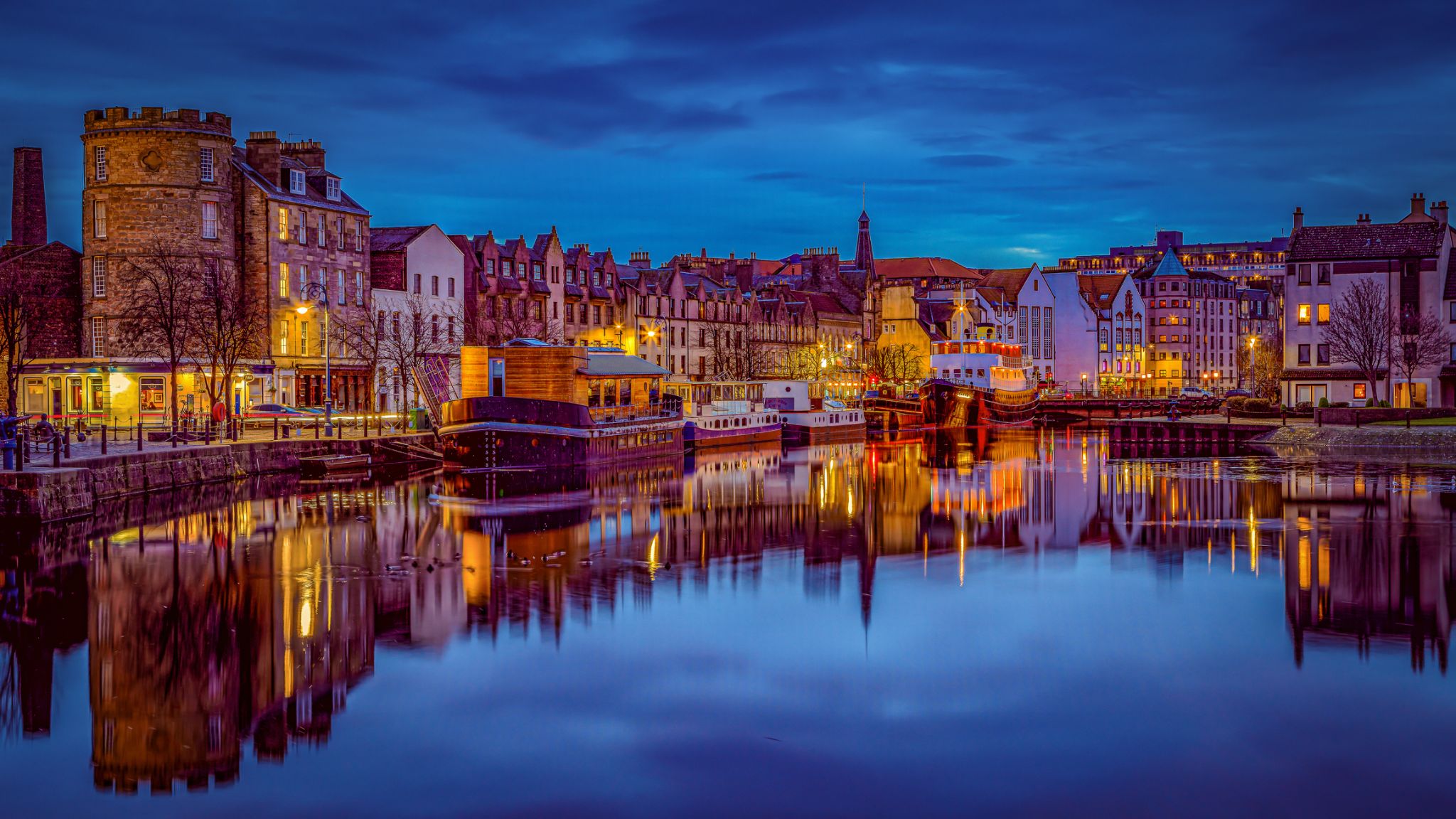
Leith is an area to the north of the city of Edinburgh, Scotland, at the mouth of the Water of Leith.
The earliest surviving historical references are in the royal charter authorising the construction of Holyrood Abbey in 1128. The medieval settlements of Leith had grown into a burgh by 1833, and the burgh was merged into Edinburgh in 1920.
Historically part of the county of Midlothian, Leith is sited on the coast of the Firth of Forth and lies within the council area of the City of Edinburgh.
The port remains one of its most valuable enterprises, handling over 1.5 million tonnes of cargo in 2003.
Previous to the bridge being built in the late 15th century, Leith had settlements on either side of the river, lacking an easy crossing.
South Leith was larger and was controlled by the lairds of Restalrig: the Logan family. It was based on trade and had many merchants' houses and warehouses. This was where ships offloaded their cargoes at The Shore where they were collected by Edinburgh merchants. Leithers were explicitly forbidden by statute to participate directly in the trade at the port, to ensure that landed goods were not sold elsewhere.
North Leith was smaller but proportionately richer, coming under the jurisdiction of Holyrood Abbey. It was effectively a fishing village consisting of one street, now Sandport Street and Quayside Lane. Burgage plots ran down to the river from each house.[6] This has traditionally been the shipbuilding side of Leith with several wet and dry docks built over time. The first dry dock in Scotland was built here in 1720. A small peninsula of land on the east bank also came under the same jurisdiction on what is now Sheriff Brae/Sheriff Bank.
The first bridge to link both banks of the river was built in 1493 by Abbot Bellenden, who controlled the church at North Leith. The bridge was a toll bridge, the revenue supplementing the church's income. Reputedly Leith's oldest building, it was demolished in 1780 to allow ships to sail further upstream.

Leith is an area to the north of the city of Edinburgh, Scotland, at the mouth of the Water of Leith.
The earliest surviving historical references are in the royal charter authorising the construction of Holyrood Abbey in 1128. The medieval settlements of Leith had grown into a burgh by 1833, and the burgh was merged into Edinburgh in 1920.
Historically part of the county of Midlothian, Leith is sited on the coast of the Firth of Forth and lies within the council area of the City of Edinburgh.
The port remains one of its most valuable enterprises, handling over 1.5 million tonnes of cargo in 2003.
Previous to the bridge being built in the late 15th century, Leith had settlements on either side of the river, lacking an easy crossing.
South Leith was larger and was controlled by the lairds of Restalrig: the Logan family. It was based on trade and had many merchants' houses and warehouses. This was where ships offloaded their cargoes at The Shore where they were collected by Edinburgh merchants. Leithers were explicitly forbidden by statute to participate directly in the trade at the port, to ensure that landed goods were not sold elsewhere.
North Leith was smaller but proportionately richer, coming under the jurisdiction of Holyrood Abbey. It was effectively a fishing village consisting of one street, now Sandport Street and Quayside Lane. Burgage plots ran down to the river from each house.[6] This has traditionally been the shipbuilding side of Leith with several wet and dry docks built over time. The first dry dock in Scotland was built here in 1720. A small peninsula of land on the east bank also came under the same jurisdiction on what is now Sheriff Brae/Sheriff Bank.
The first bridge to link both banks of the river was built in 1493 by Abbot Bellenden, who controlled the church at North Leith. The bridge was a toll bridge, the revenue supplementing the church's income. Reputedly Leith's oldest building, it was demolished in 1780 to allow ships to sail further upstream.
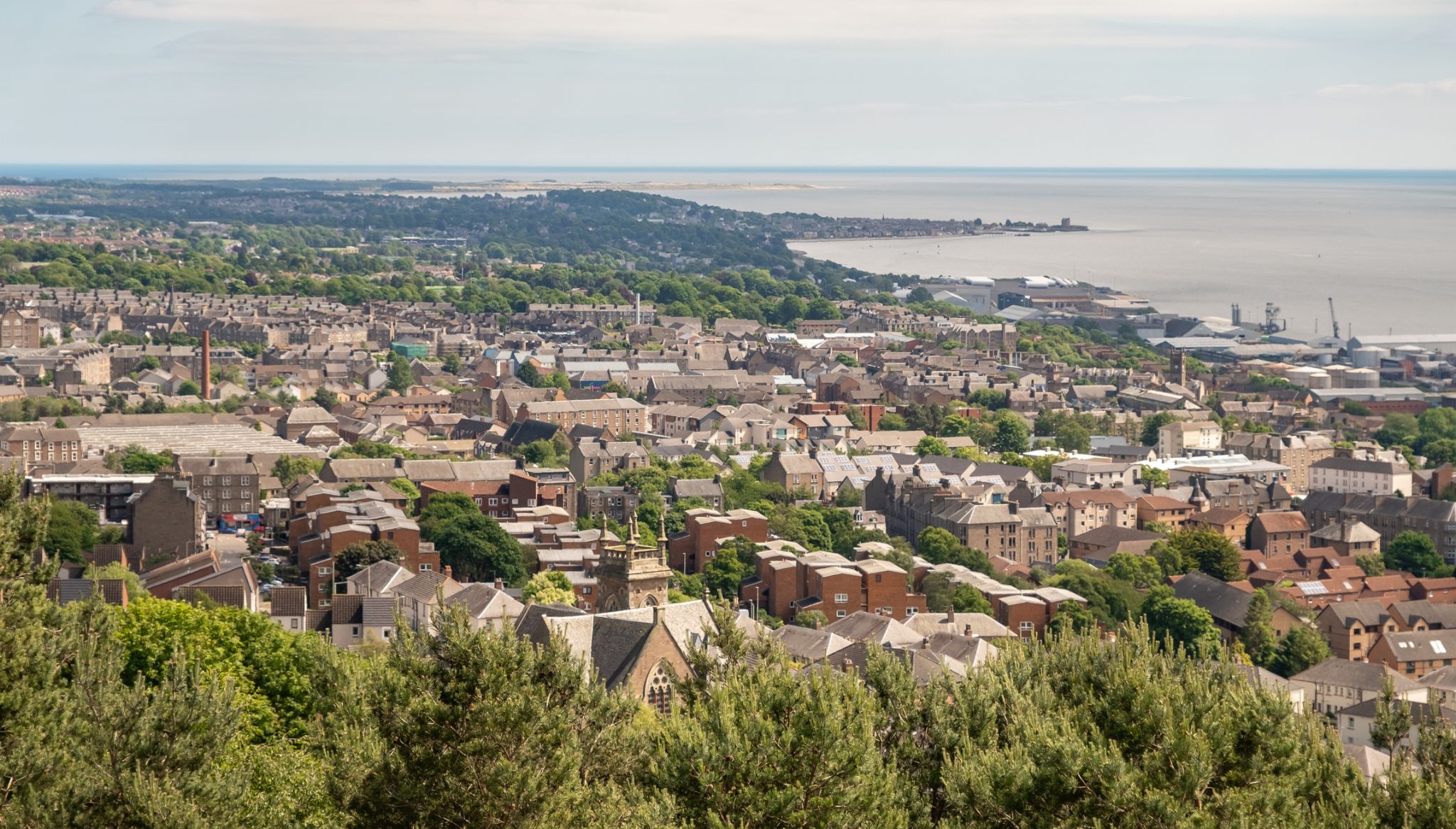
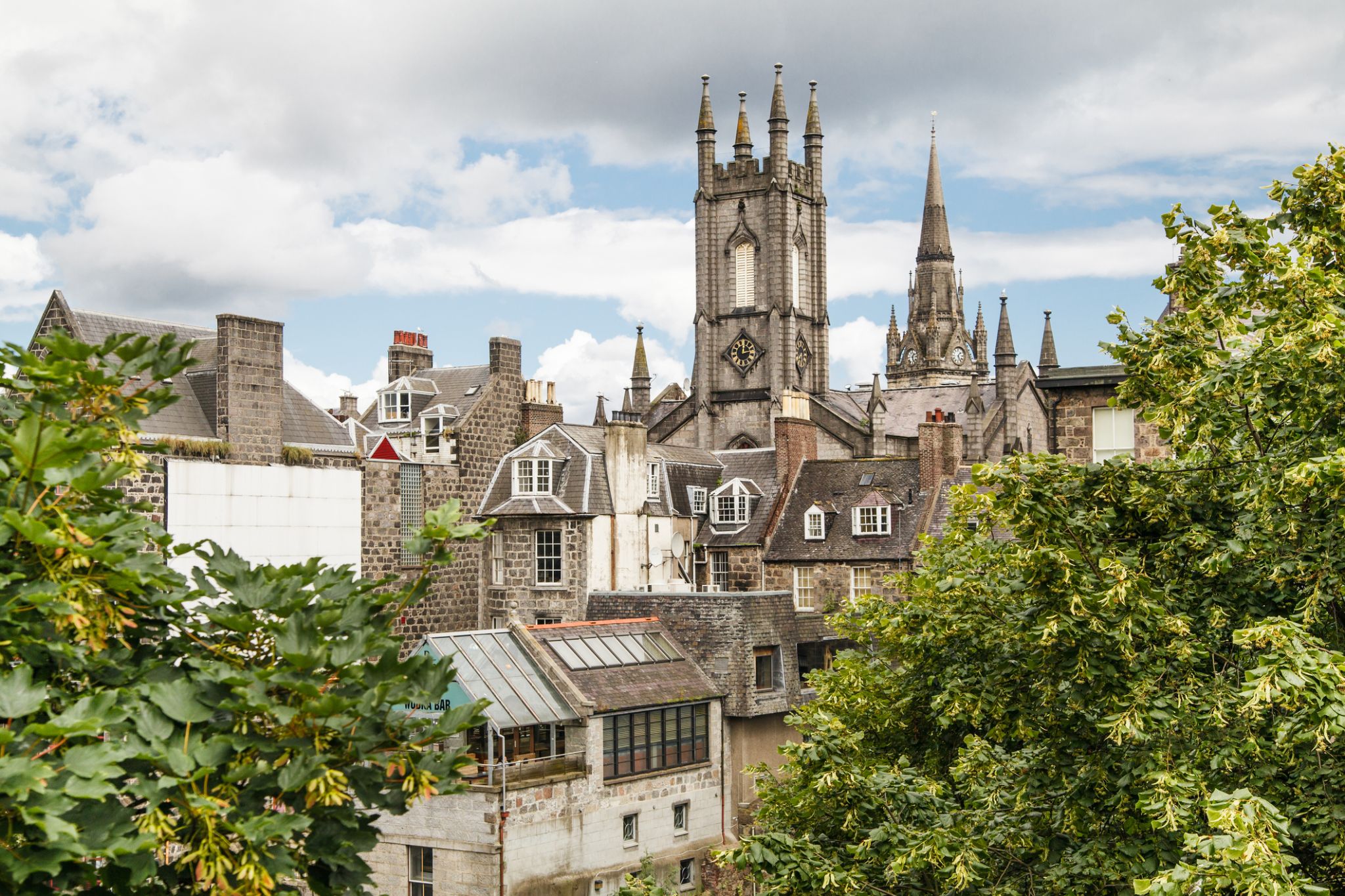
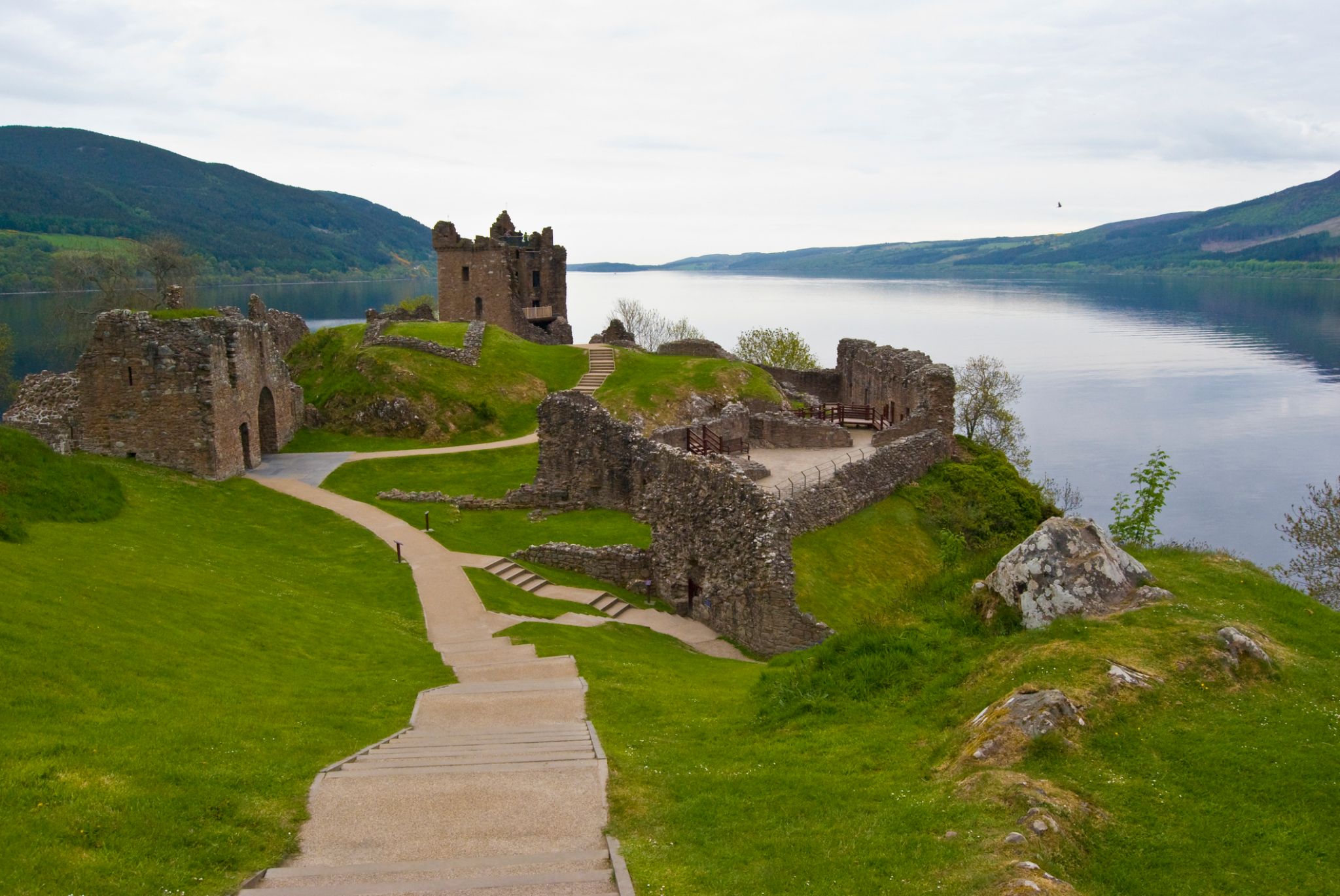
The town is well known for the Invergordon Mutiny of 1931. More recently it has also become known for the repair of oil rigs which line up in the Cromarty Firth on which the town is situated. In the 1970s and 1980s nearby Nigg was known for the construction of these rigs. The yard used for this is now attempting to re-establish itself as a fabricator of large offshore wind turbines and oil rig refurbishment since being purchased by Global Energy Group.
For a number of years Invergordon was the site of an aluminium smelter until 1981 when British Aluminium closed it down. The pipeline that covered the conveyor belt from the smelter to the BA pier was not dismantled until the early 2000s and the two large tanks still stand today as well as a water tower.
It still has a grain whisky distillery, operated by Philippines-owned whisky giant Whyte and Mackay, the output of which contributes to many blended whiskies. Connected to the distillery was the Invergordon Distillery Pipe Band.
At present the port is visited by many large cruise liners each year, as the deep water port allows disembarkation for coach tours in the northern Highlands.
Since the 1970s some would perceive the town as a 'Glasgow colony', since many workers were recruited from southern Scotland to work in the oil rig fabrication and aluminium smelting industries. As a result, the residents' accents often show more influence from Glasgow, than the surrounding Easter Ross dialect of Highland Englishalthough this has changed in recent years.
In recent years Global Energy Group have been expanding, with the purchase of the Nigg fabrication yard it has also brought much appreciated work to Invergordon's Docks with the town again full of oil company workers through the day.
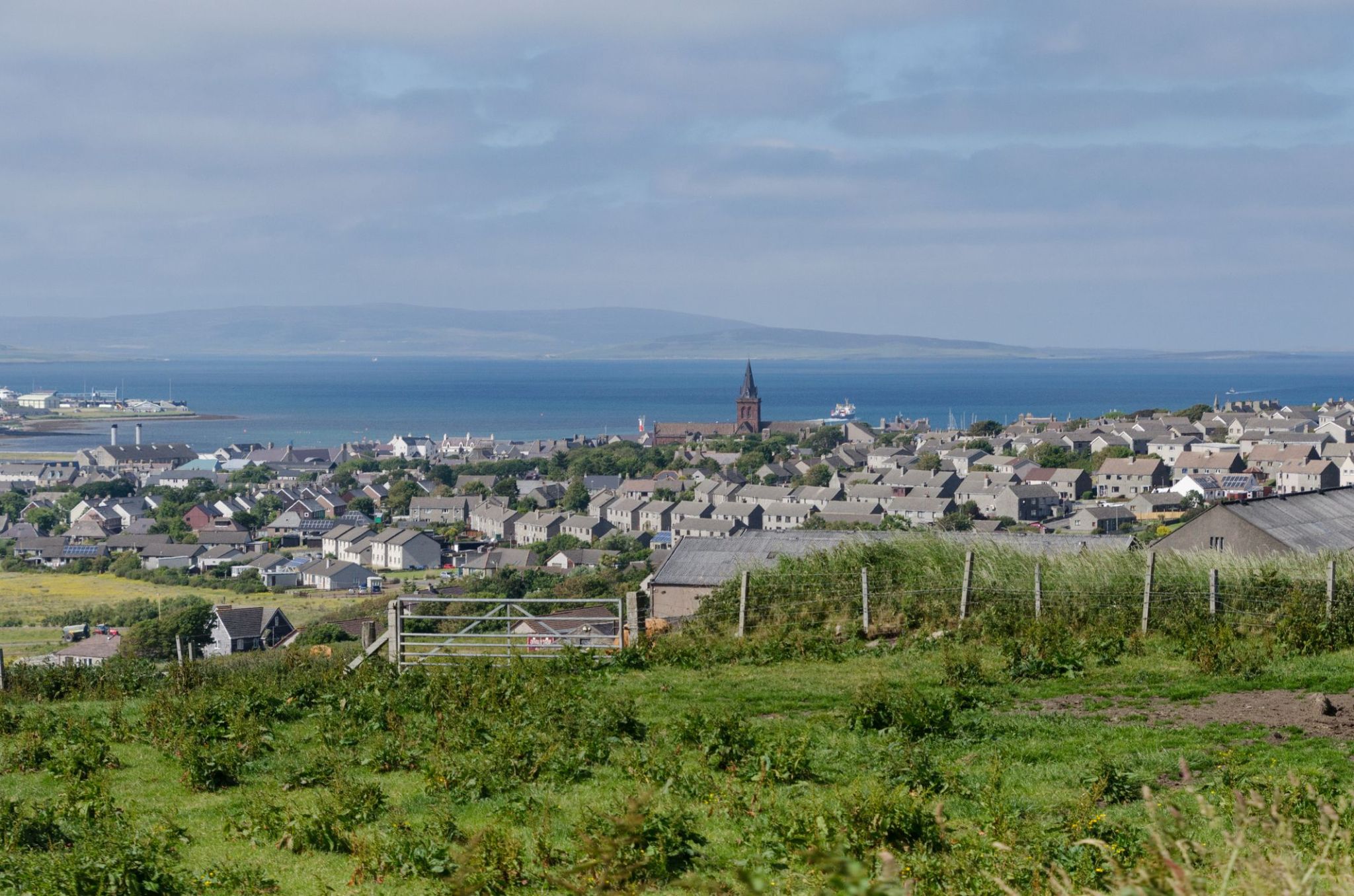

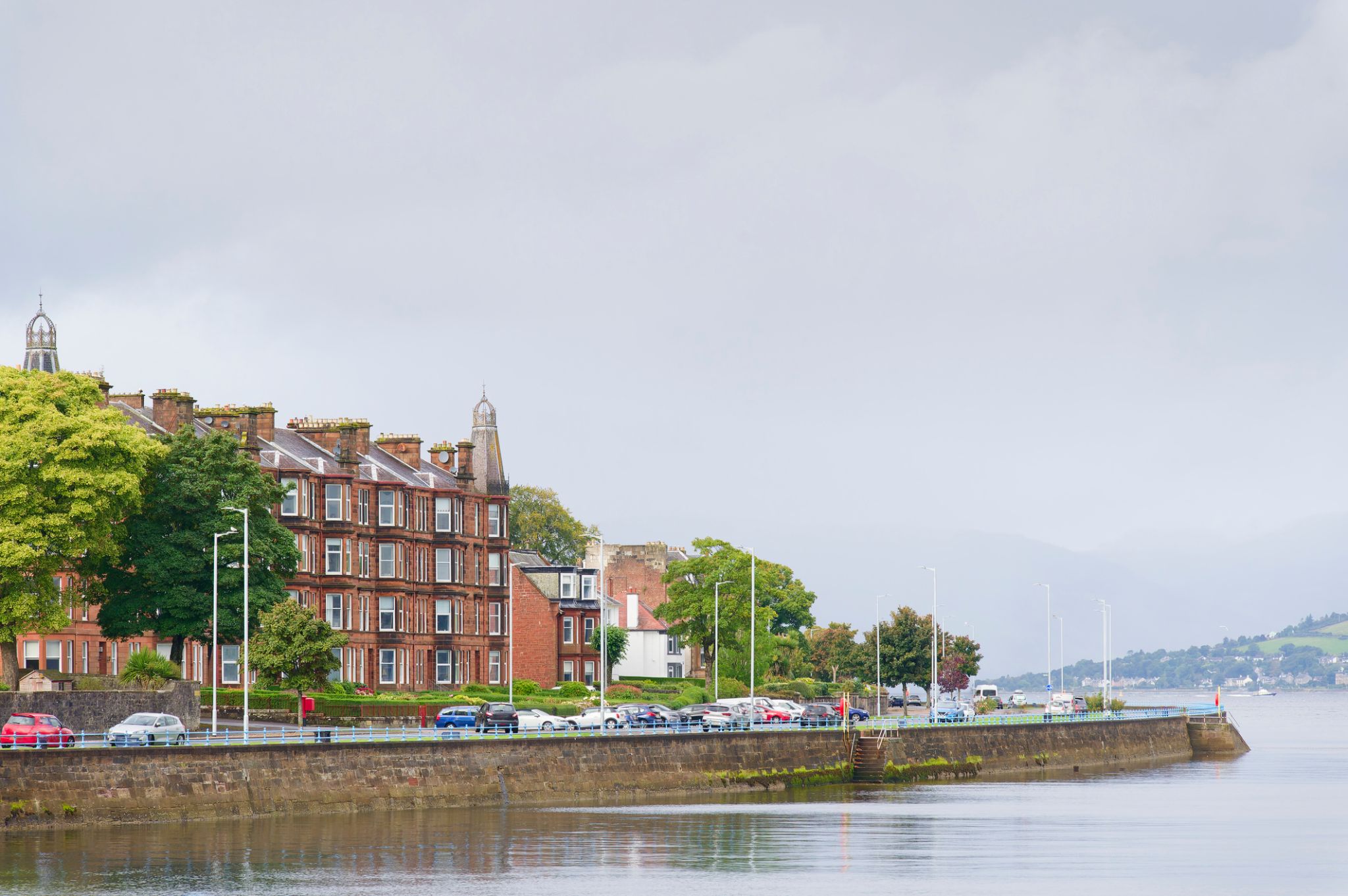
Greenock to miasto w Szkocji, położone na południowo-zachodnim wybrzeżu, 32 kilometry na zachód od Glasgow. Greenock zostało założone jako port, a jego historyczne znaczenie związane jest z rozwojem przemysłu stoczniowego i handlu. Przez wiele lat było ważnym centrum żeglugi, a dziś miasto nadal pełni rolę istotnego węzła transportowego, z dużym portem i nowoczesną infrastrukturą. Greenock słynie również ze swoich historycznych budowli, takich jak latarnia morska w Greenock, a w pobliżu można zobaczyć muzeum żeglugi oraz wiele starych magazynów, które zachowały atmosferę minionych czasów.
Dla turystów Greenock to malownicze miejsce do spacerów wzdłuż nabrzeża i w parkach, a także doskonałe miejsce do poznania historii szkockiego żeglarstwa. Miasto stało się także popularnym miejscem dla podróżnych na statkach wycieczkowych, ponieważ jego port zapewnia dostęp do najpiękniejszych części zachodniego wybrzeża kraju. W okolicach miasta znajduje się wiele naturalnych atrakcji, w tym pobliskie wyspy oraz piękne plaże, gdzie można odpocząć i podziwiać widoki na morze i wybrzeże.
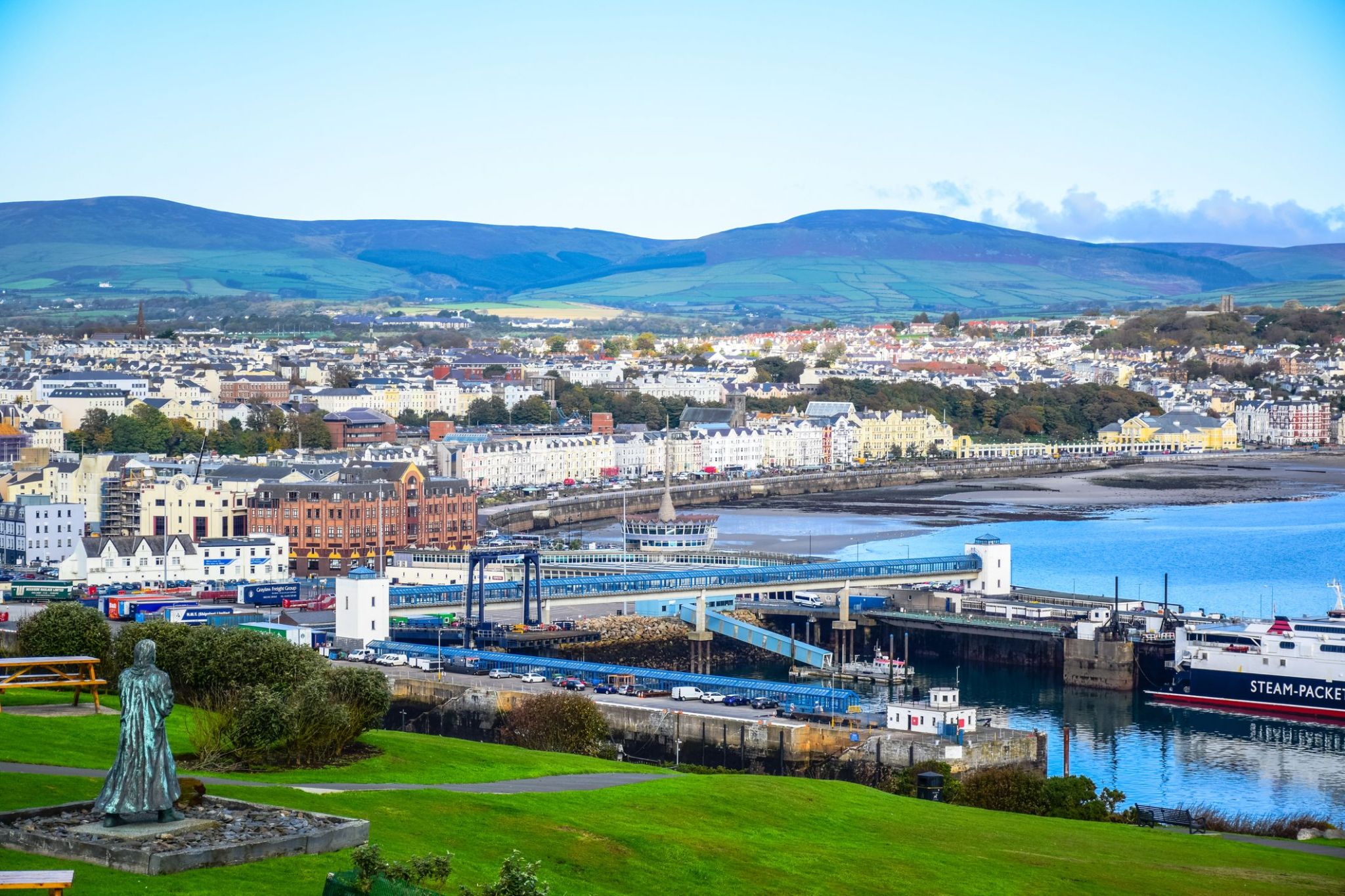
Douglas to stolica i największe miasto Wyspy Man, położone w Morzu Irlandzkim. Miasto, które ma bogatą historię morską, jest znane z malowniczych krajobrazów wybrzeża oraz przytulnej atmosfery. W Douglasie można spacerować po historycznej promenadzie, gdzie znajdują się zabytkowe budynki i nowoczesne kawiarnie, a także odwiedzić lokalne muzeum, które opowiada o morskiej kulturze i tradycjach wyspy. Miasto jest również znane z architektonicznych zabytków, takich jak zamek i historyczne budynki wiktoriańskie, które nadają mu wyjątkowy urok.
Okolice Douglas oferują doskonałe możliwości do aktywnego wypoczynku, w tym wędrówki, spacery wzdłuż wybrzeża i wycieczki rowerowe. Wyspa Man słynie z unikalnej przyrody, a turyści mogą podziwiać widoki na wzgórza, malownicze zatoki i tradycyjne wioski. Ten zakątek Wielkiej Brytanii przyciąga turystów swoją unikalną kulturą, starodawnymi tradycjami oraz pięknymi naturalnymi krajobrazami, co sprawia, że jest to idealne miejsce na relaksujący wypoczynek i ekscytujące podróże.
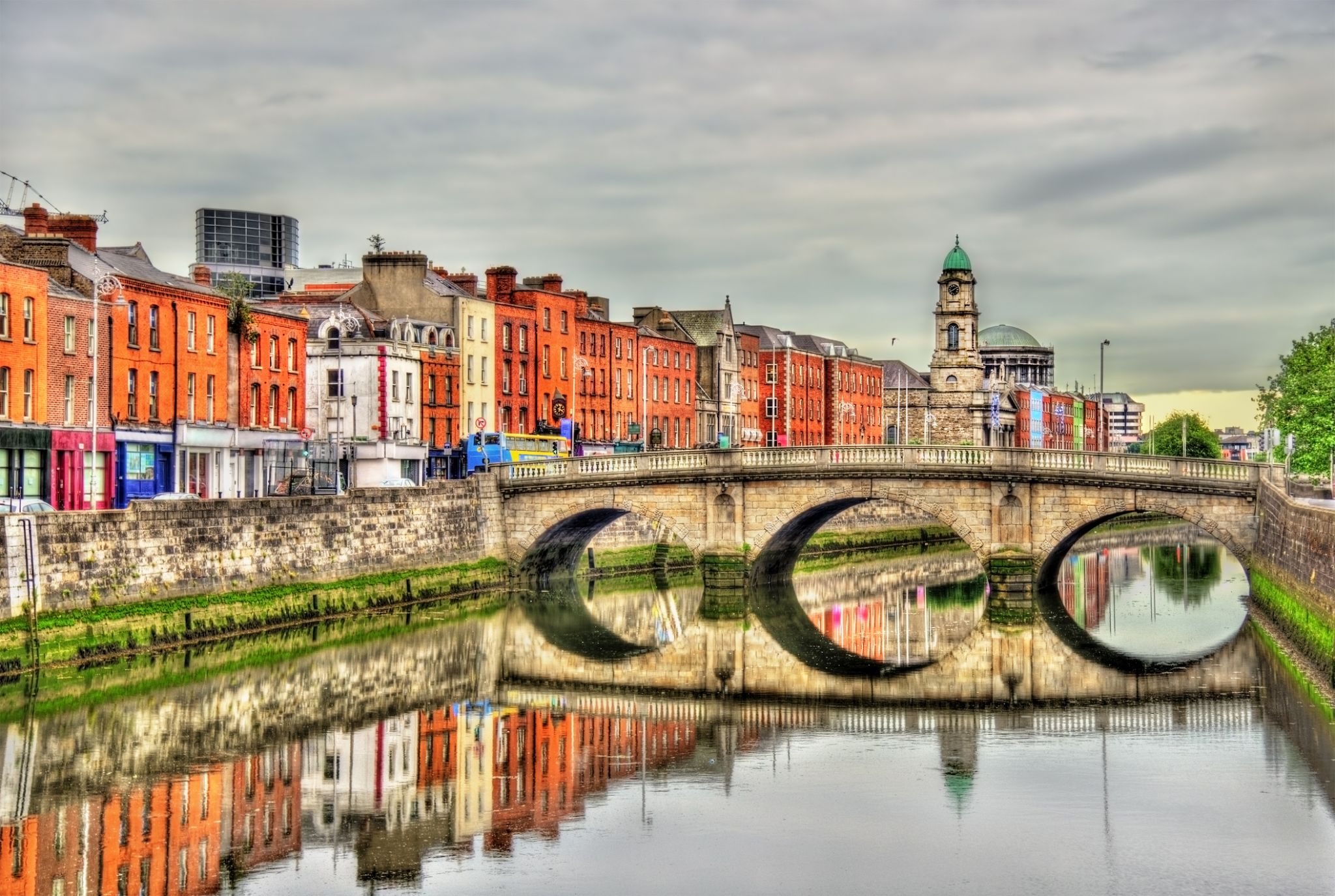
Dublin is the capital of, and largest city in, Ireland. It is on the east coast of Ireland, in the province of Leinster, at the mouth of the River Liffey, and is bordered on the south by the Wicklow mountains. It has an urban area population of 1,173,179, while the population of the Dublin Region (formerly County Dublin), as of 2016, was 1,347,359, and the population of the Greater Dublin area was 1,904,806.
There is archaeological debate regarding precisely where Dublin was established by Celtic-speaking people in the 7th century AD. Later expanded as a Viking settlement, the Kingdom of Dublin, the city became Ireland's principal settlement following the Norman invasion. The city expanded rapidly from the 17th century and was briefly the second largest city in the British Empire before the Acts of Union in 1800. Following the partition of Ireland in 1922, Dublin became the capital of the Irish Free State, later renamed Ireland.
Dublin is a historical and contemporary centre for education, the arts, administration and industry. As of 2018 the city was listed by the Globalization and World Cities Research Network (GaWC) as a global city, with a ranking of "Alpha -", which places it amongst the top thirty cities in the world.